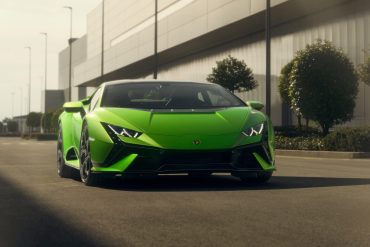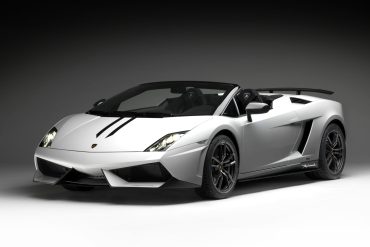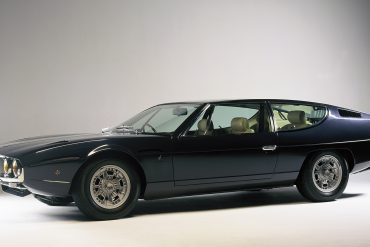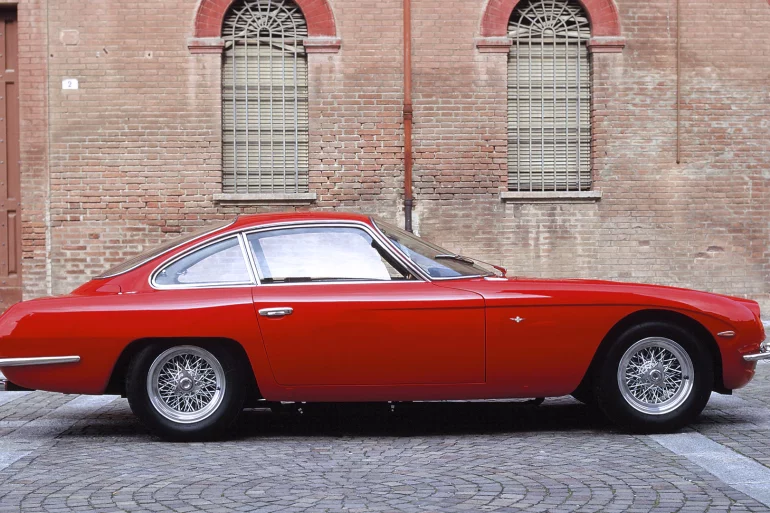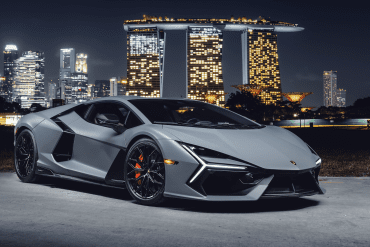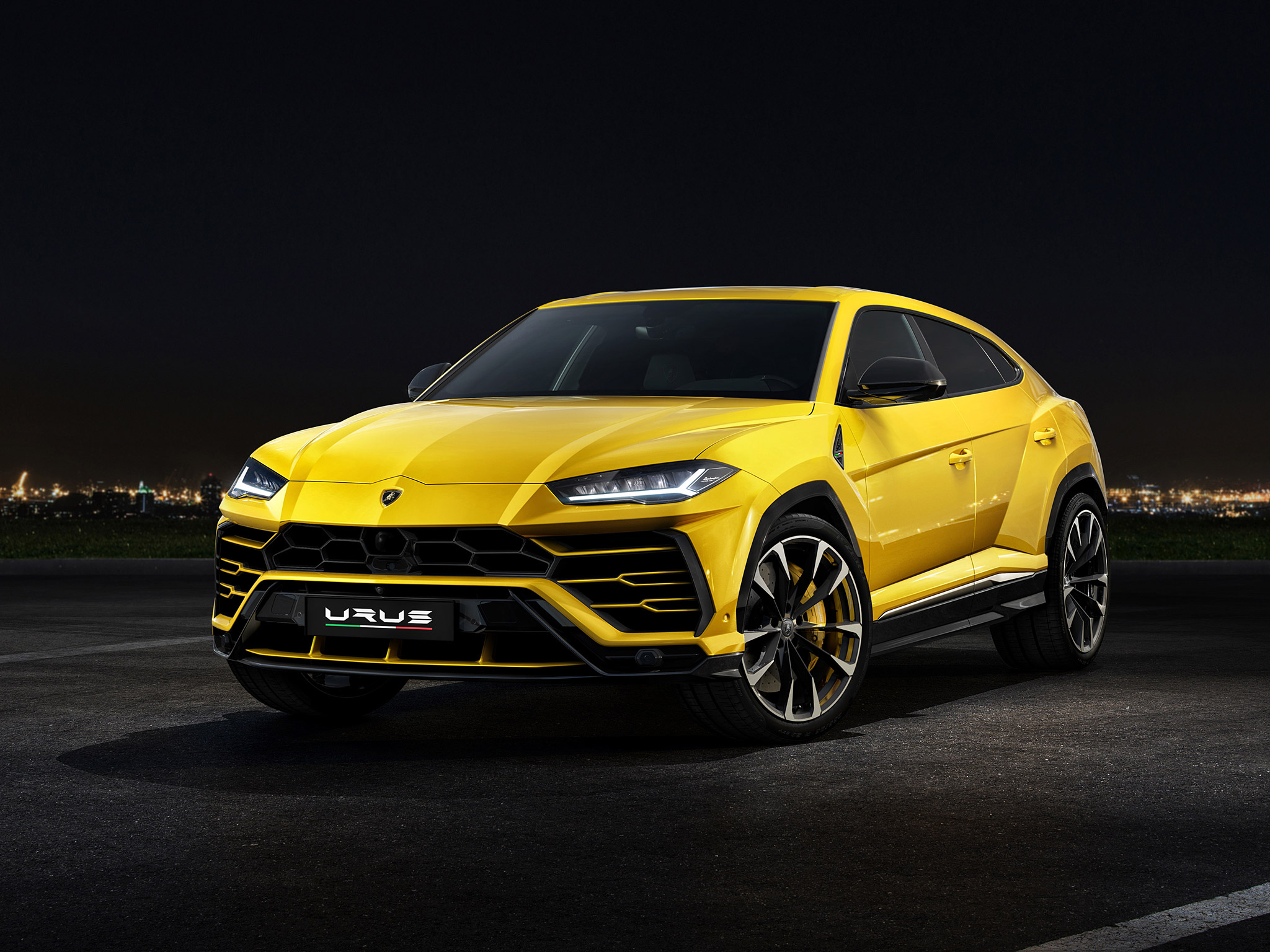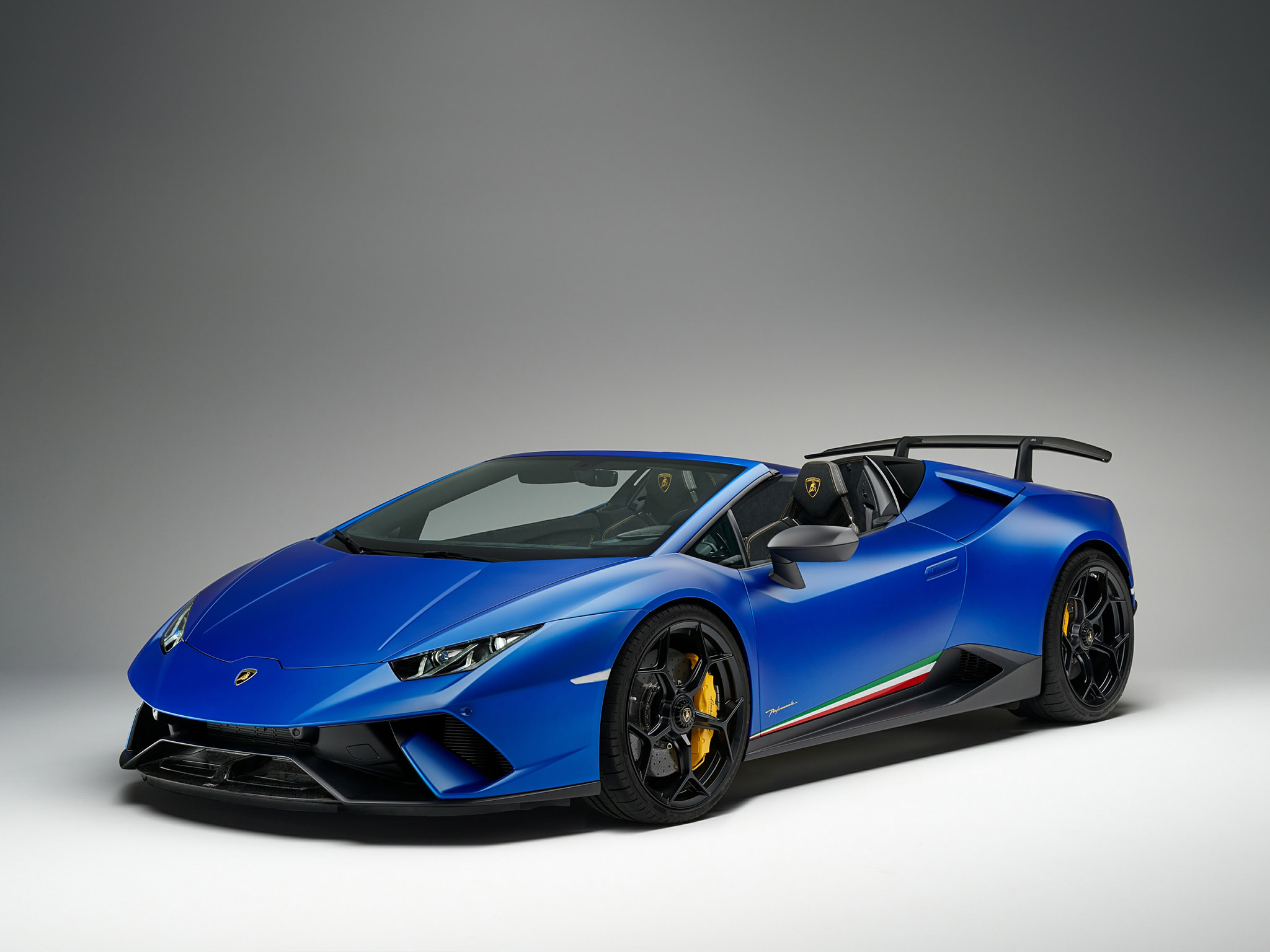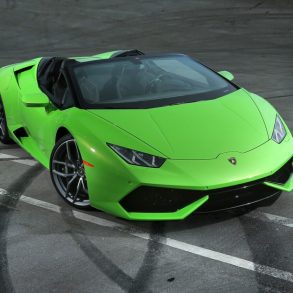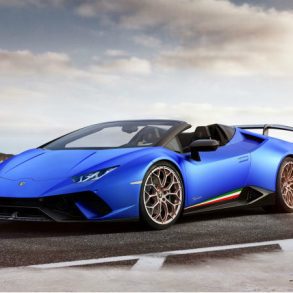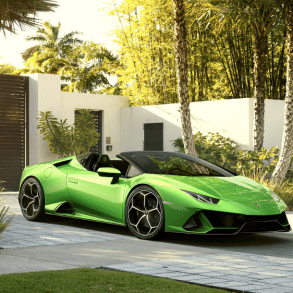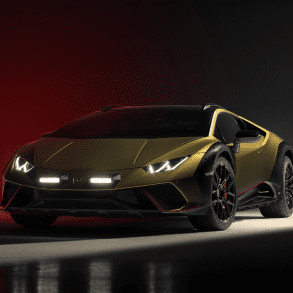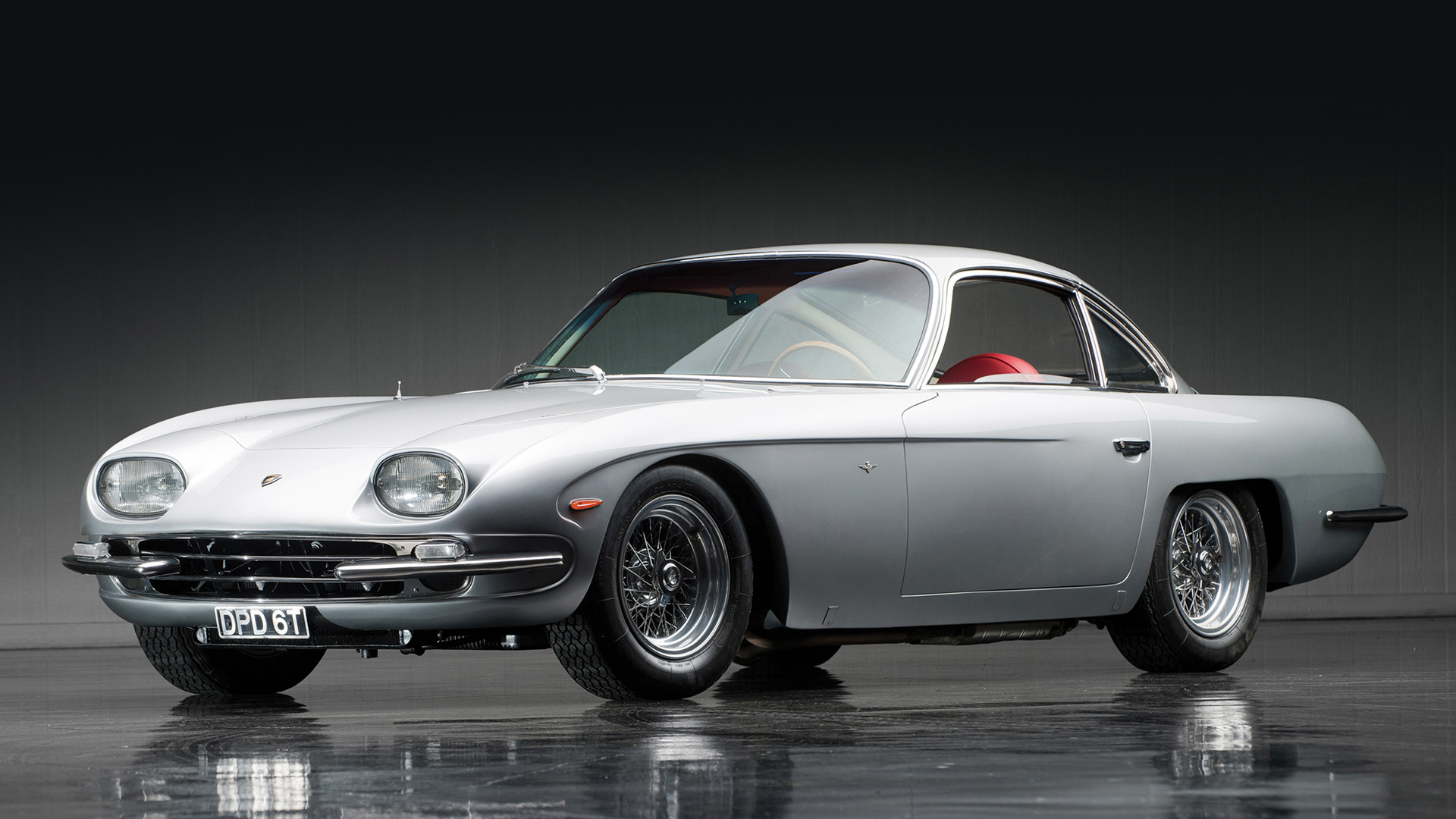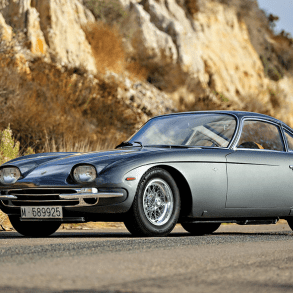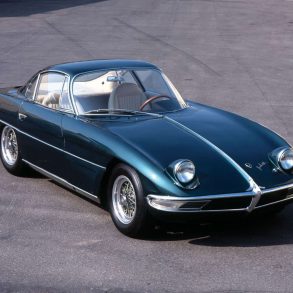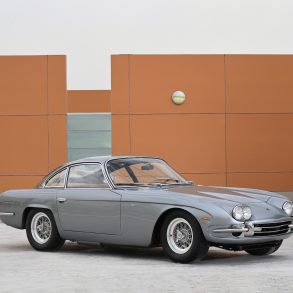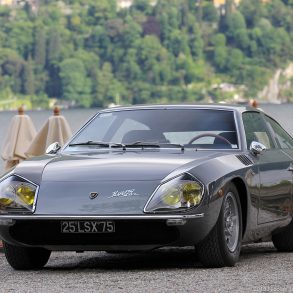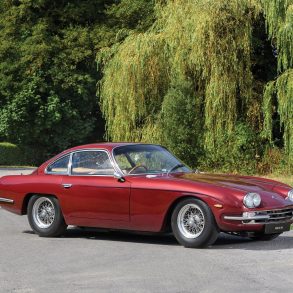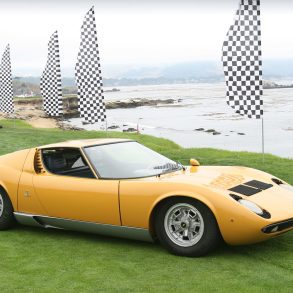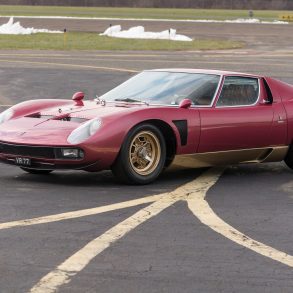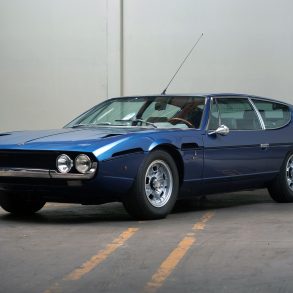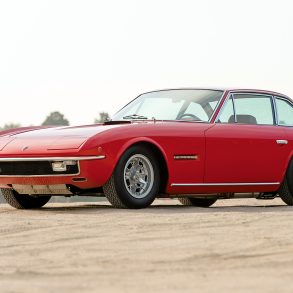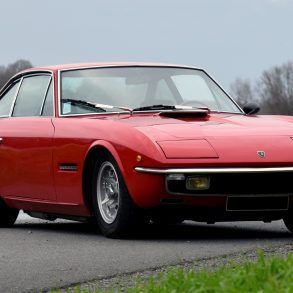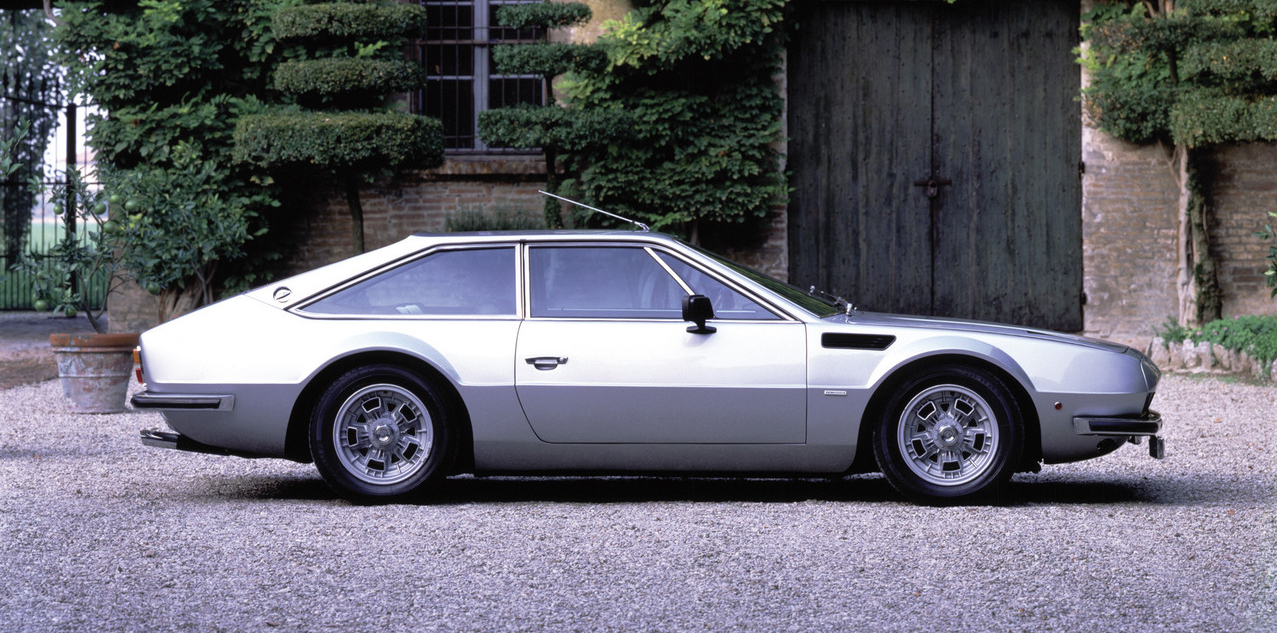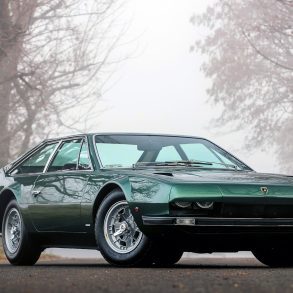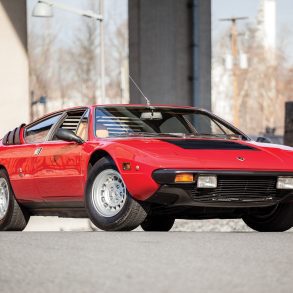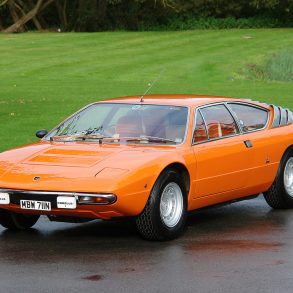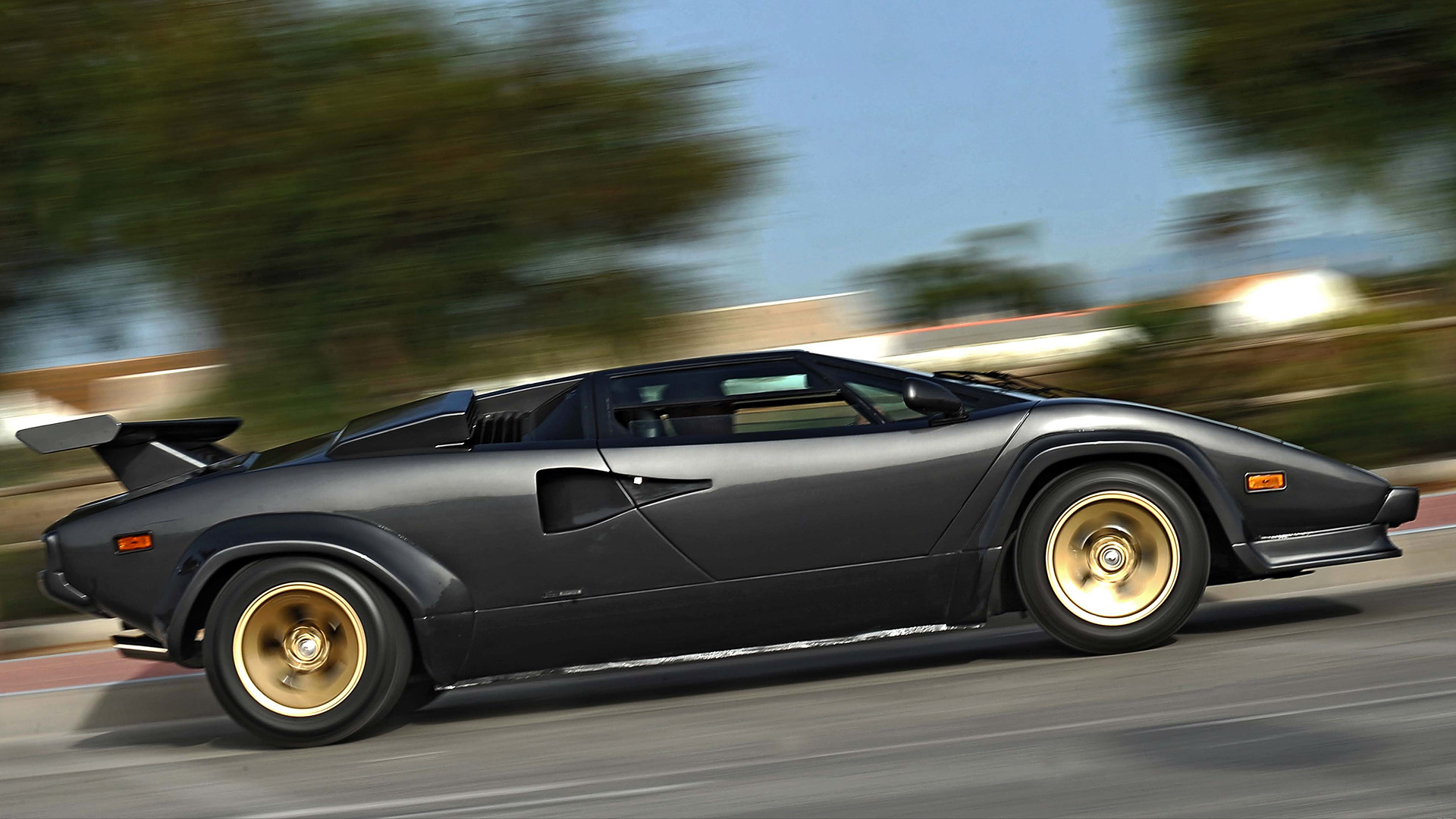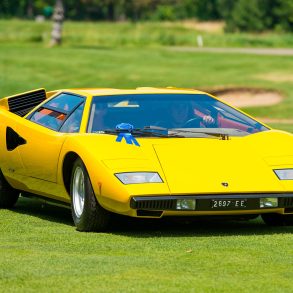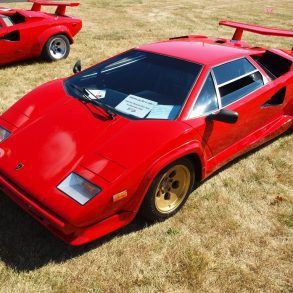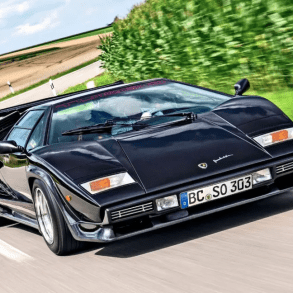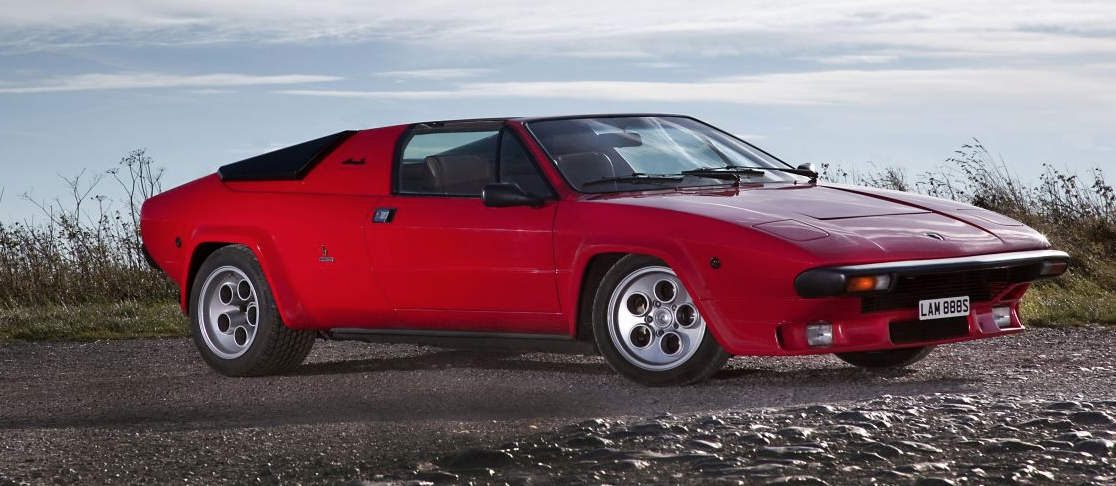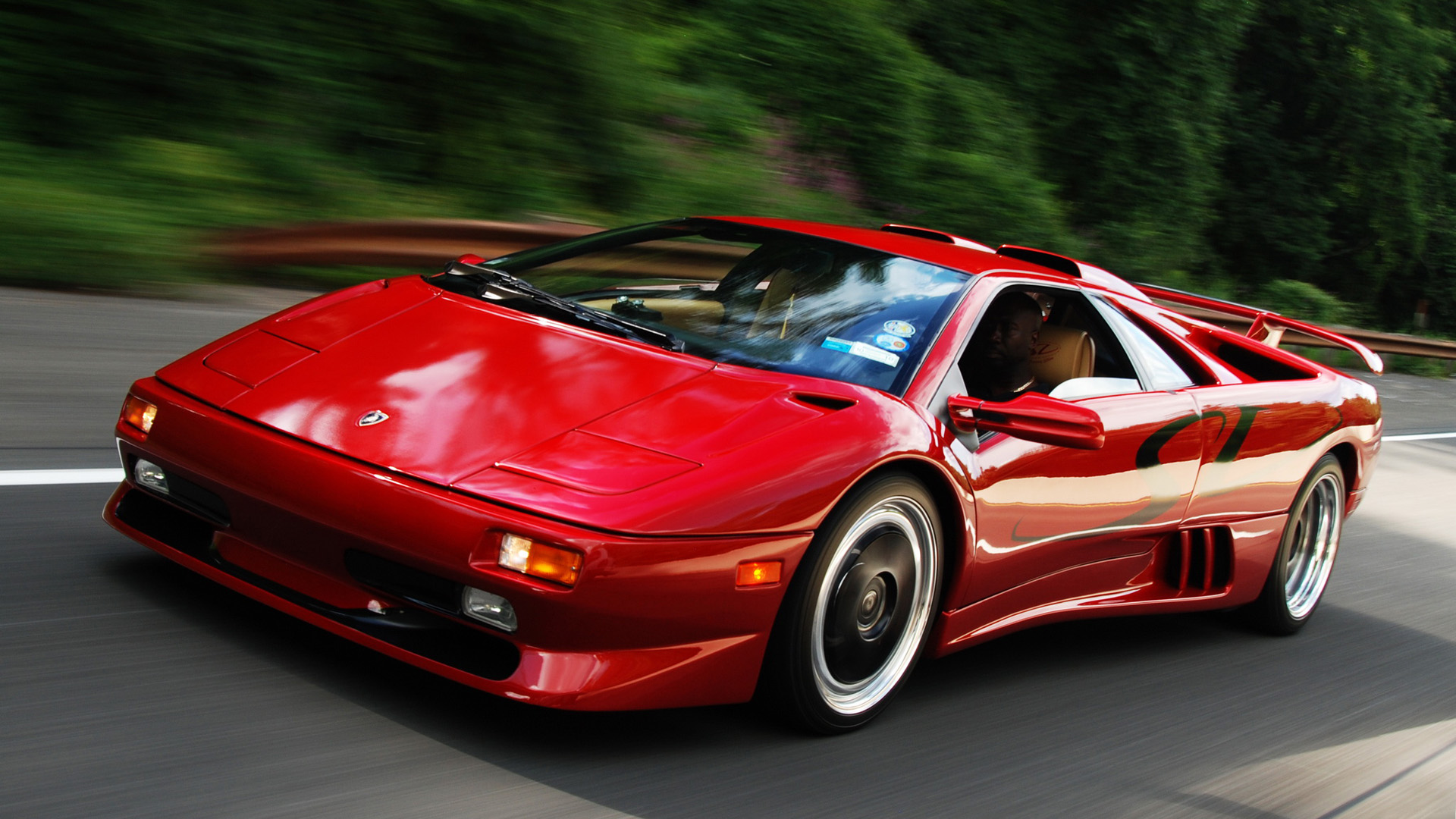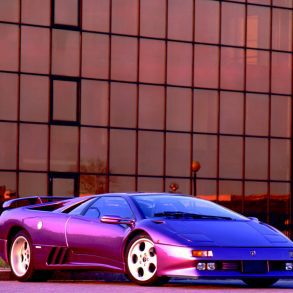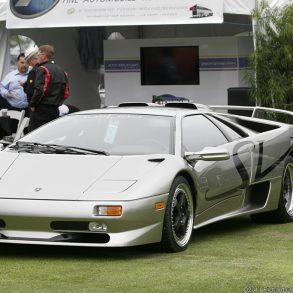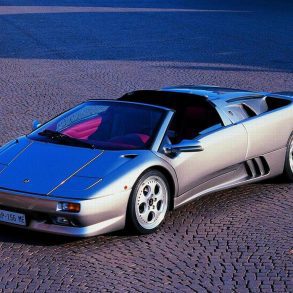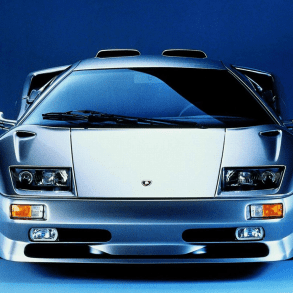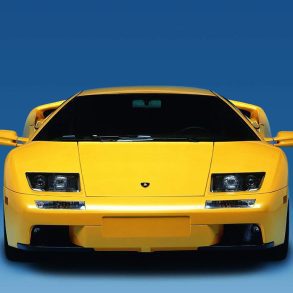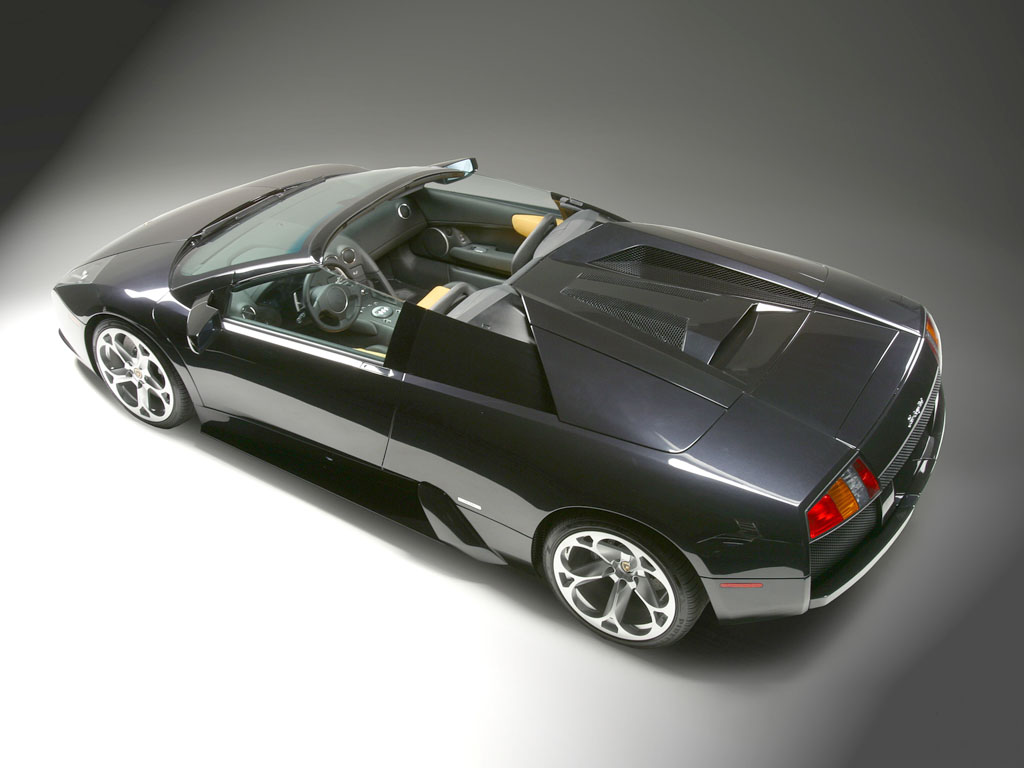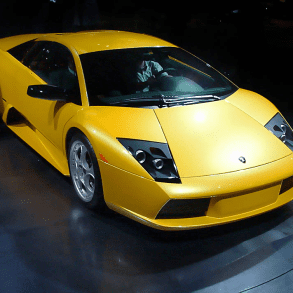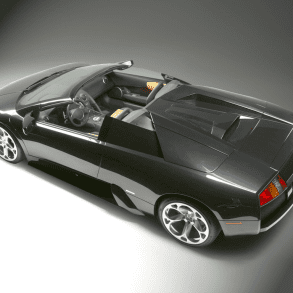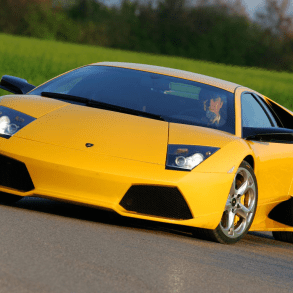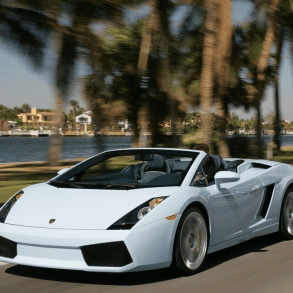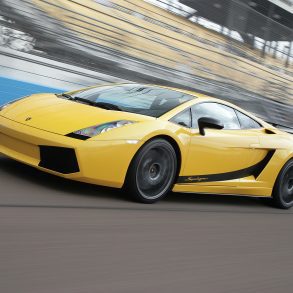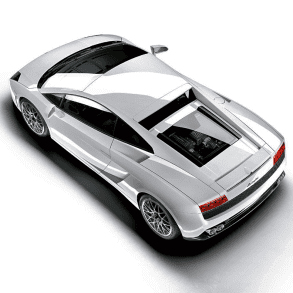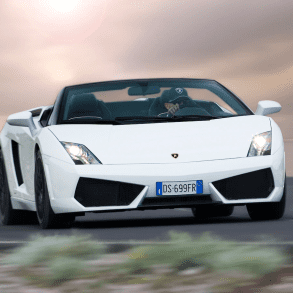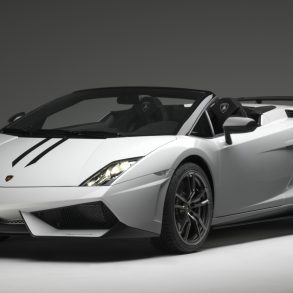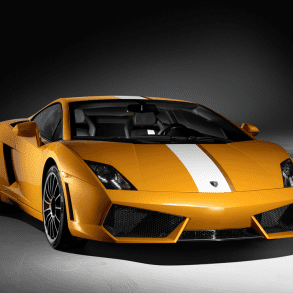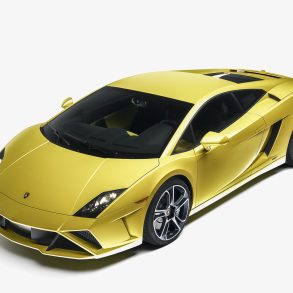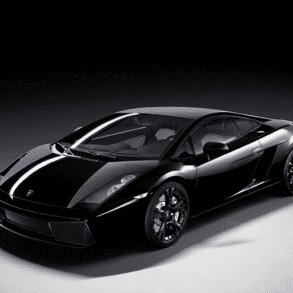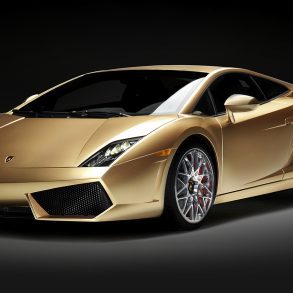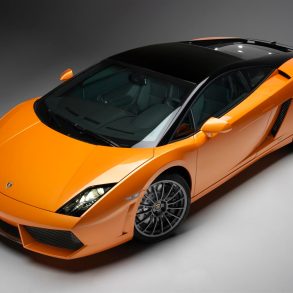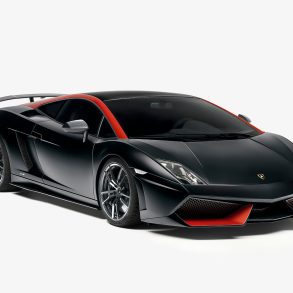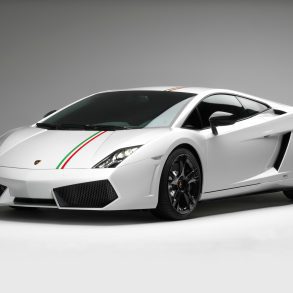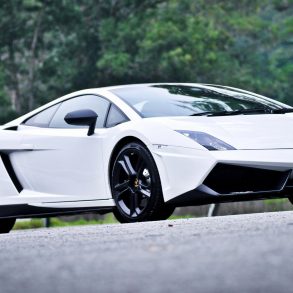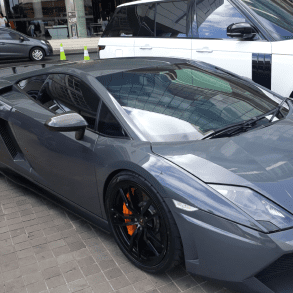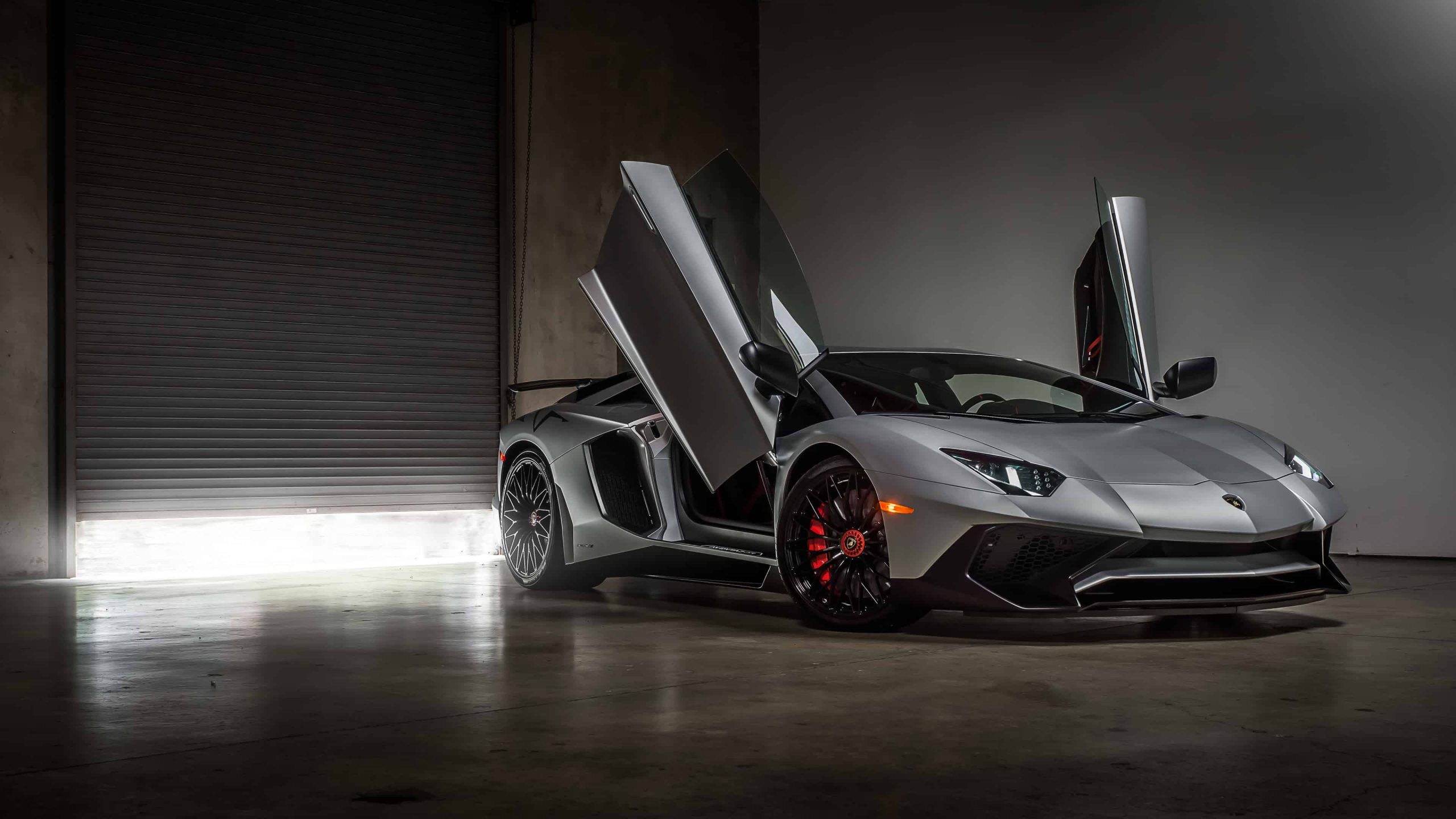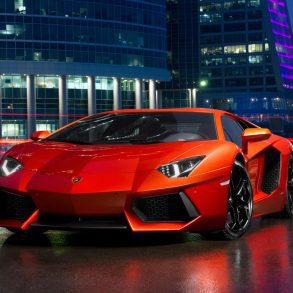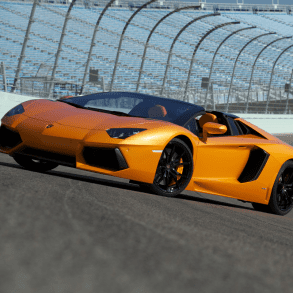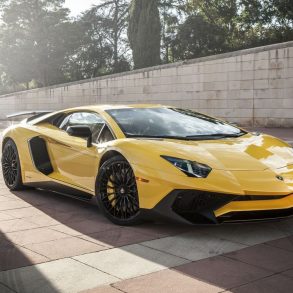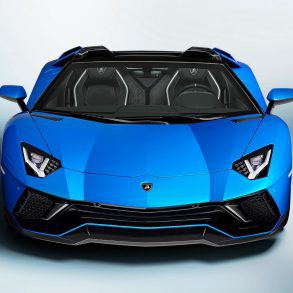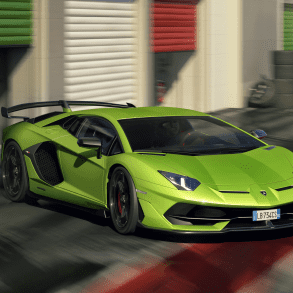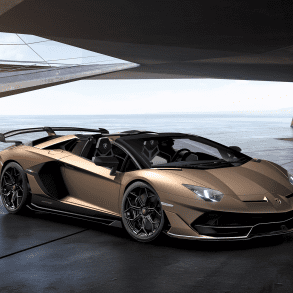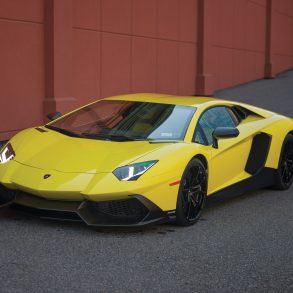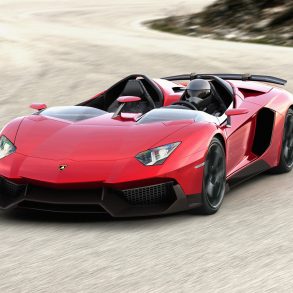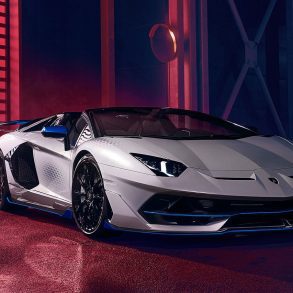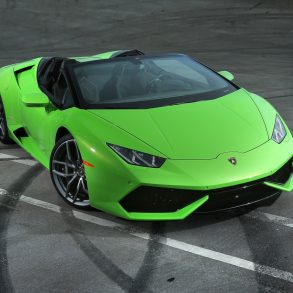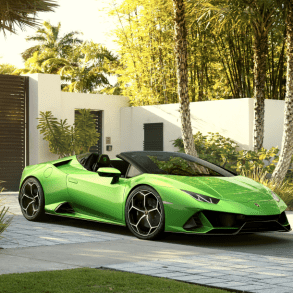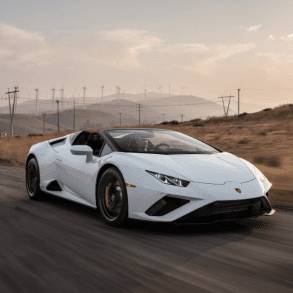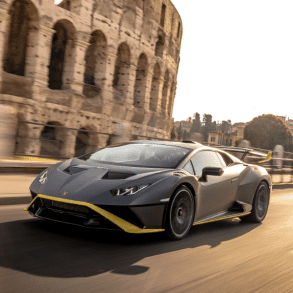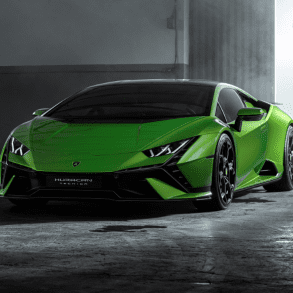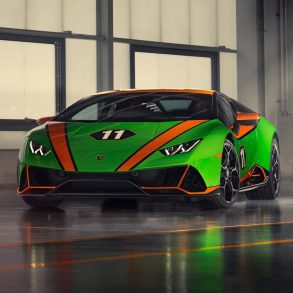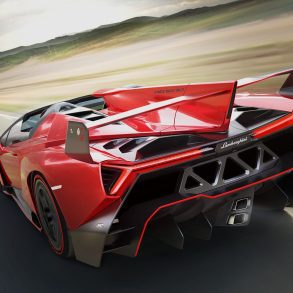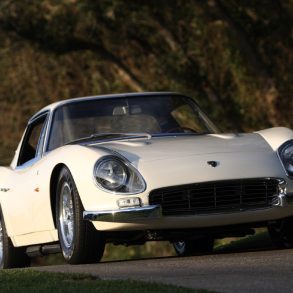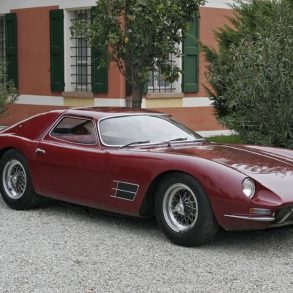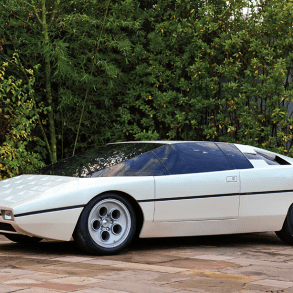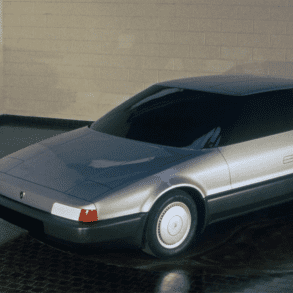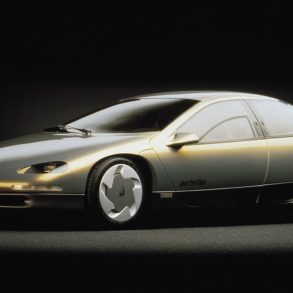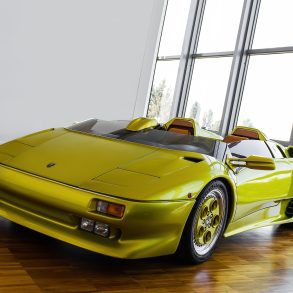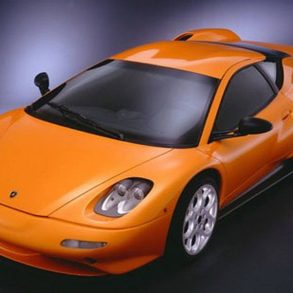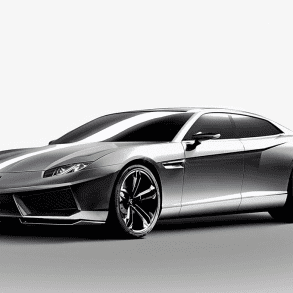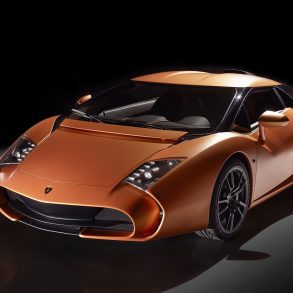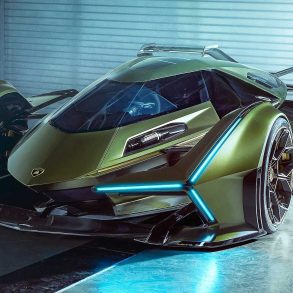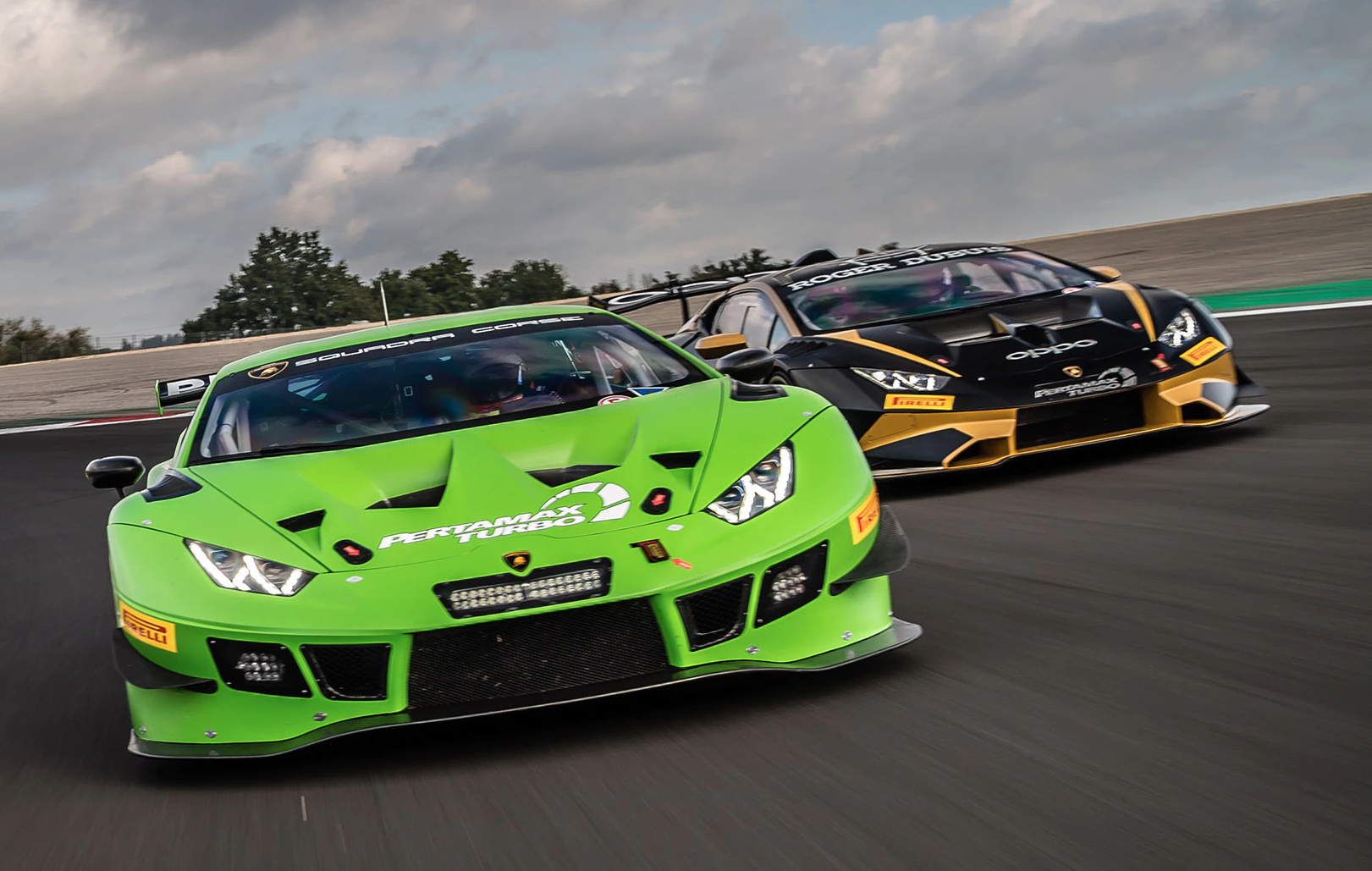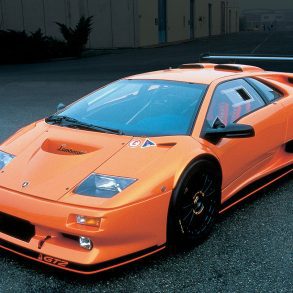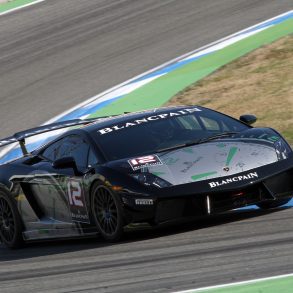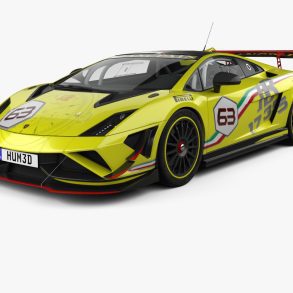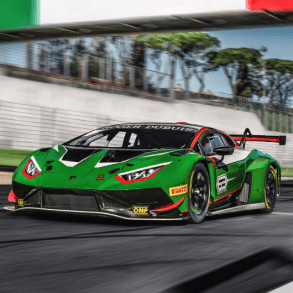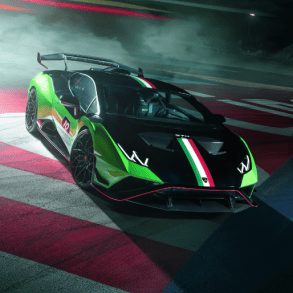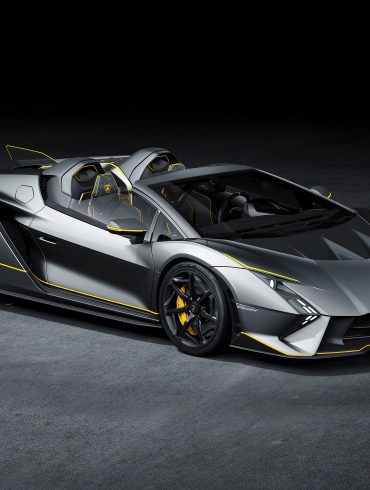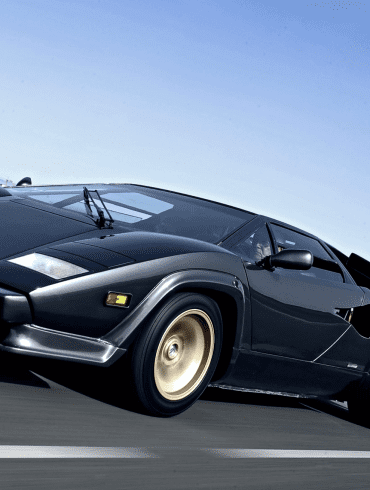Lamborghini Models
Model Deep Dives / Current Models / Legacy Models / Few Off Specials / Concepts / Race Cars
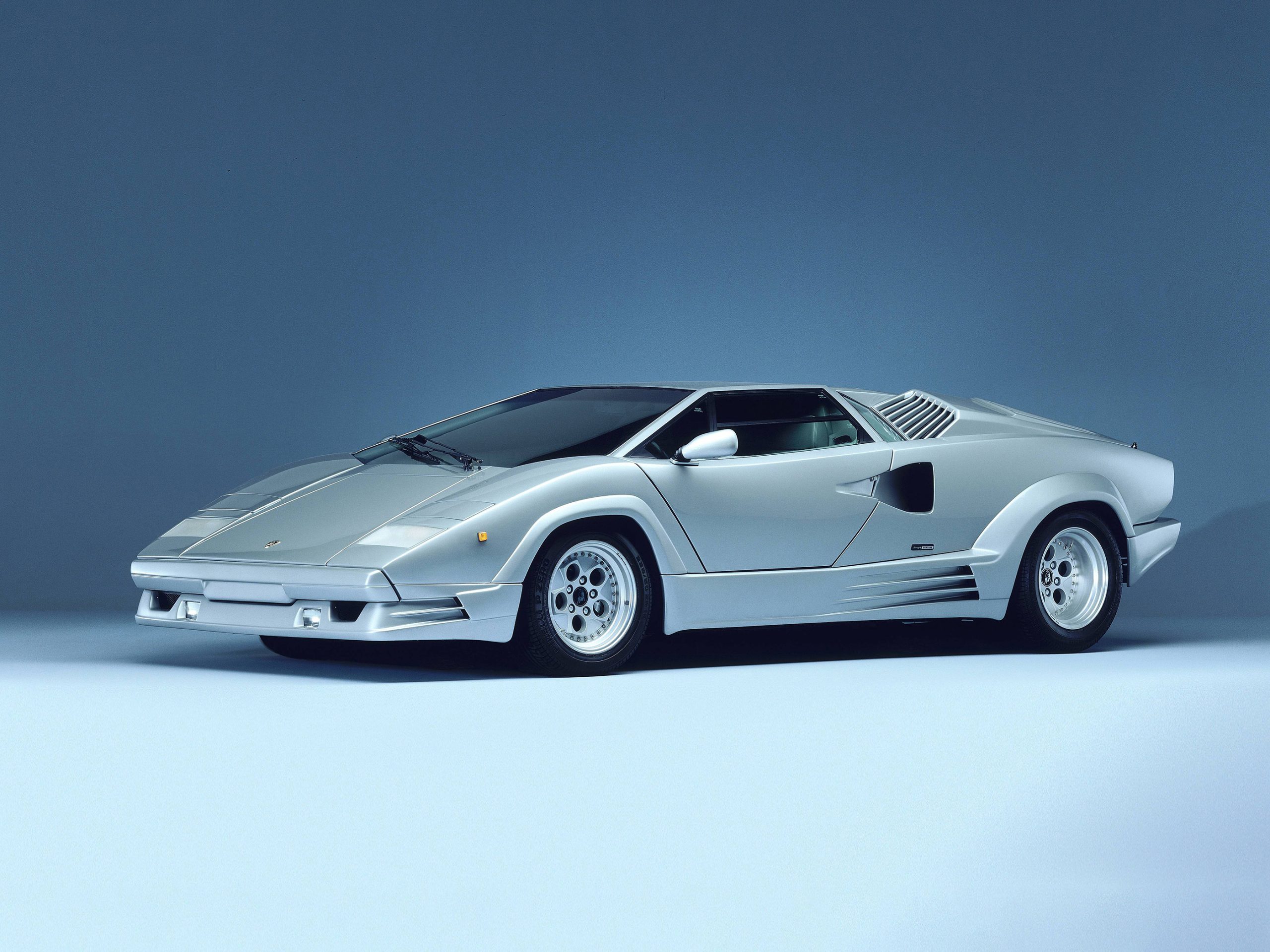
Lamborghini Model List. Every Lamborghini Ever Made
Nobody Makes Supercars Like Lamborghini.
Ferruccio Lamborghini took old military machines and re-purposed them as agriculture supplies such as tractors. He became very wealthy. Like anyone who comes into wealth, he bought several luxury cars, including a Ferrari. When he provided Enzo Ferrari feedback on some of the shortfalls in his cars, Ferrari told him to buzz off (paraphrasing). The rivalry had begun and Lamborghini decided to turn his hobby into a passion. Lamborghini the car company was born. Soon afterwards Lamborghini released the Lamborghini 350 GT at the Turin Motor Show. From this initial success Lamborghini continued to build high end cars. It was the Lamborghini Miura however that took the company to the next level. It was revolutionary, futuristic and like nothing else that had ever been built before. The age of the supercar had began. Fast forward to today and Lamborghini has created some of the most mouthwatering, emotional and desirable supercars ever. The Lamborghini model list reads like a car fans dream list: Gallardo, Diablo, Murcielago, Huracan, Aventador and Revuelto. There is also the Urus, the brand's sole SUV offering.
Current Models
Lamborghini Urus
The first modern Lamborghini SUV and one hell of an SUV. The Urus looks aggressive and has the right level of Lambo styling without going overboard. The Urus is power by a 4.0 liter twin-turbo V8 that is good for 641 horsepower and 627 lb/ft of torque. Performance is astonishing for a big SUV, with 0-60 mph over in 3.2 seconds and a top speed of 190 mph. The Urus is fully deserving of its tag as a Super Sports Utility Vehicle (SSUV). The Urus has been a massive sales success, appealing to a wider audience and really boosting Lamborghini's bottom line.
Lamborghini Urus (SUV)
2017 - Present
The first modern Lamborghini SUV and one hell of an SUV. The Urus looks aggressive and has the right level of Lambo styling without going overboard. The Urus is power by a 4.0 liter twin-turbo V8 that is good for 641 horsepower and 627 lb/ft of torque. Performance is astonishing for a big SUV, with 0-60 mph over in 3.2 seconds and a top speed of 190 mph. The Urus is fully deserving of its tag as a Super Sports Utility Vehicle (SSUV).
Lamborghini Revuelto
The Aventador is dead, long live the Revuelto. Lamborghini’s new flagship boasts over 1,000 horsepower from its new hybrid powertrain. This is the brands first ever plug-in hybrid production car, combining three electric motors with a 3.8kWh battery pack and a high revving naturally aspirated V12 engine. It is the lightest and most powerful Lamborghini production V12 to date and produces 814 hp and 531 lb ft of torque on its own. When combined with the electric motors, the total system output rises to 1,001 hp.
Lamborghini Revuelto
2017 - Present
The Lamborghini Revuelto (something akin to "Revolution") is the first non-special series model from the Italian marque to offer a full performance hybrid drivetrain. It also continues the legacy of the Lamborghini V12, in this instance a 6.5L unit bellowing out 814 HP on its own, with a redline at 9,500 RPM, but combines it with two motors up front, one for each wheel and one motor inside the 8-speed transaxle, which all combine to add 187 HP, for a combined total of 1,001 HP.
Lamborghini Huracan
When the Lamborghini Huracán debuted in 2014, it had big shoes to fill. Replacing the wildly successful Gallardo was no small feat, but the Huracán rose to the challenge, solidifying itself as a worthy successor and an icon in its own right. Taking center stage in the Huracán is a screaming naturally-aspirated 5.2-liter V10 engine. The Huracán's evolution compared to the Gallardo is marked by a greater sense of refinement. It delivers its outrageous power with a newfound level of control. While its production run may come to an end in the coming years, its legacy as a cornerstone of Lamborghini's lineup is secure. Learn more about the Lamborghini Huracan.
Lamborghini Huracan LP 610-4 Coupe
2014 - 2019
In 2014 Lamborghini officially launched the Huracán, the successor to the Gallardo. It had big shoes to fill given the Gallardo was the company’s best selling car. Huracán got 610 bhp V10 and gorgeous body.
Lamborghini Huracan LP 610-4 Spyder
2016 - 2019
At the 2015 IAA Lamborghini unveiled the stunning Huracan LP610-4 Spyder, the open version of the Coupé. The new Spyder is 40% more rigid compared to the Gallardo Spyder. Power was up to 610hp.
Lamborghini Huracán LP 580-2 RWD
2016 - 2019
This is the cheapest Huracan for sale today and probably the most fun. The famous Lamborghini 5.2 L V10 has been slightly detuned to 572 hp and 393 lb/ft of torque. Rear wheel drive only. One of our favorites.
Lamborghini Huracan LP 640-4 Performante
2017 - 2019
The best Lamborghini made ever in terms of sheer driving dynamics and the total package. The Performante gets more power (+29 hp) and less weight (- 90 lbs) and other improvements that makes it epic.
Lamborghini Huracan LP 640-4 Performante Spyder
2018 - 2019
It is addictive. Its 631 hp 5.2 liter V10 revs all the way to 8500 rpm and when combined with the same upgrades as the coupe (active aero, torque vectoring, stability-control program, weight loss), it is just incredible.
Lamborghini Huracan LP 610-4 Evo
2019 - Present
The Huracán received a mid-cycle update in 2019, now being called the Huracán Evo. It now shares its engine and some of the technology with the Performante variant. It has a rear-wheel steering system for improved handling and a torque vectoring system.
Lamborghini Huracán LP 640-4 EVO Spyder
2019 - Present
The Huracán Evo Spyder was introduced online in February 2019. The Spyder has the same enhancements as the coupé but is 100 kg (220 lb) heavier. The car has the same canvas folding soft top as the outgoing model which takes 17 seconds to open and close.
Lamborghini Huracán LP 610-2 EVO RWD
2020 - Present
A rear-wheel drive variant of the Evo debuted in early 2020, replacing the LP 580–2. Front splitter has been reshaped and generates more airflow. RWD model gets Performance Traction Control System that ensures that torque is not cut off abruptly. The sweet spot in the Huracan lineup and more car than anybody could ever need.
Lamborghini Huracán LP 610-2 EVO RWD Spyder
2021 - Present
A convertible version of the rear-wheel drive variant of the Evo was showcased in May 2020, replacing the LP 580-2 Spyder. Like the Coupé variant, the convertible has a power output of 449 kW (602 hp; 610 PS). The convertible has a 0–97 km/h (0–60 mph) acceleration time of 3.5 seconds and has a claimed top speed of 323 km/h (201 mph).
Lamborghini Huracán 640-2 STO
2022 - Present
The Huracán STO is a track focused car. It is completely different from other Huracán variants. The STO has a taller rear wing with a roof snorkel for engine cooling. The engine cover is reminiscent of the race cars and it comes with three new driving modes: STO for road driving, TROFEO for fast lap times on dry tarmac, and PIOGGIA for wet weather driving.
Lamborghini Huracan LP 640-2 Tecnica
2022 - Present
Unlike many Huracáns, the Tecnica sends all of its 640 horsepower exclusively to the rear wheels. It gains a unique engine tune, revised steering, and suspension setup. It is aimed at those seeking the excitement of a rear-wheel-drive supercar but with the usability and modern technologies.
Lamborghini Huracan LP 610-4 Sterrato
2022 - Present
The production Huracán Sterrato is an all-terrain variant of the Hurácan. Changes over other variants include a 1.7-inch higher ground clearance, revamped suspension with greater travel, widened front and rear track, LED lights mounted to the front bumper, additional protective underbody sills, and Bridgestone all-terrain tires.
Lamborghini 350 GT
This is where it all began. The 350 GTV prototype definitely got potential customers excited so Lamborghini decided to produce production cars as a result. The 350 GT introduced a more balanced design than the aggressive 350 GTV. Solid orders for the car ensured the companies’ survival and paved the way for future models. From Ferrari’s perspective, a new competitor had risen.
Lamborghini 350 GT
1964 – 1966
Like the concept 350 GTV, the production version had four-wheel independent suspension, a quad-cam V12 with a Scaglione-designed, aluminum body. The 350 GT was a hit and the legend had begun.
Lamborghini 350 GTS
1964 (Concept)
Building on the 350 GT which was launched in 1964, Lamborghini then had two roadster variants made up by Carrozzeria Touring for show duty. Unfortunately Lamborghini never went into production of a roadster.
Lamborghini 350 GTV
1963 (Concept)
At the 1963 Turin Auto Show, the 350 GTV showed Lamborghini could create cars (it made tractors before that). The GTV had a striking new body design by Franco Scaglione. The prototype that started it all.
Lamborghini 400 GT
Lamborghini launched the first 400 GT in 1966. This car was known as either the 400 GT or the 400 GT Interim. The car was a version of the older Lamborghini 350 GT with a bigger and much more powerful V12 engine. The engineers at Lamborghini increased the stroke from 77 to 82 for a total displacement of 3929cc. This brought over power from 270 to 320 bhp at 6500 rpm.
Lamborghini 400 GT (Production)
1965 – 1966
The 400 GT was restyled and made roomier vs its predecessor, resulting in the first proper 2+2 Lamborghini four-seater model. Only 23 of the 400 GT were made, an interim stop gap between 350 GT and 400 GT 2+2.
Lamborghini 4000 GT ‘Flying Star II’
1966 (One-Off)
One of the very last cars designed by Carrozzeria Touring Superleggera was this unique Flying Star II show car. It was built on a shortened 400 GT chassis and had a controversial body by Carlo Anderloni.
Lamborghini 400 GT 2 + 2 (Touring)
1966 – 1968
This new model accommodated a rear set of seats that couldn’t fit in the original design. Touring had to pay considerable attention to increasing interior space without losing the 350 GT’s elegant proportions.
Lamborghini Miura
Very few cars managed to change the automobile world like the Miura. It was the first true supercar. It had a radical specification in relation to common engineering of the time. The Miura was endowed with a quad-cam V12 that sat transverse and behind the drivers. Immediately, everything from Ferrari to Aston Martin looked outdated by comparison upon release. It redefined the concept of a sports car.
Miura Prototipo
1966 – 1967
Before the first production Miura was completed on April 20th of 1967, Lamborghini produced five developmental prototypes which were used for testing and as show cars. They were used and abused and toured around the world.
Miura
1966 – 1969
The first supercar definitely stood out in looks, tech and performance. The Miura was the fastest production car in the world with a top speed of 163 mph and 0 to 60 mph in 6.3 seconds. It set new standards.
Miura S
1968 – 1971
The Miura was updated in 1969 to the Miura S. It got a modified rear suspension and new state of the art series 70 Pirelli Cinturato radials. It also used heavier-gauge steel on the chassis to reduce flexing.
Miura SV Prototipo
1971 (One Off)
Lamborghini finalized details of the Miura Spinto Veloce (SV) package on this car, the Miura SV Prototipo. The prototype is the first car to feature many of the SV upgrades that later typified the model. It got buyers excited.
Miura SV
1971 – 1973
The SV was the final and most developed version of the Miura. The main focus was a new rear suspension that made the car wider. Longer wishbones were fitted and larger cast magnesium wheels added.
Lamborghini Espada
The Lamborghini Espada was unveiled at the 1968 Geneva Auto Show, after Ferruccio Lamborghini demanded the creation of a proper four-seater. During its ten-year production, the Espada received several modifications. While the engine and the interior were changed with each series, the design of the bodywork remained almost untouched. The Espada became Lamborghini's bestseller from 1968 to 1978.
Lamborghini Espada (Series 1)
1968 – 1970
Beautiful design, luxurious interior, large size and powerful V12, the Espada was the embodiment of the Italian GT. Wheels were Campagnolo alloys on knock-off hubs. 186 were made before 1970.
Lamborghini Espada (Series II)
1970 – 1972
Outside the only change was the deletion of the grille covering the vertical glass tail panel. Inside changes were substantial: all-new dash, center console and steering wheel. Engine was also tweaked.
Lamborghini Islero
The Lamborghini Islero was the replacement for the Lamborghini 400GT. The 2+2 Coupè immediately highlighted Lamborghini's expertise in terms of engine output, chassis, and overall performance. Production ceased after only 225 units.
Lamborghini Islero
1968
The car debuted at the 1968 Geneva Auto Show. The 340 bhp, 3.9L DOHC V-12 engine had six Weber carburetors, a five-speed manual transmission and four-wheel independent suspension.
Lamborghini Jarama
Think of the Lamborghini Jarama as a Lamborghini Islero version 2.0. It had a shorter chassis to meet U.S. standards (the main reason it was commissioned in the first place), shortened by almost 11 inches. Thanks to the excellent combination of a strong engine and luxurious comfort it was one of the founders favorite cars. The original GT had a V12 with 350 bhp and was followed by the GTS that had 365 bhp. A total of 328 Jaramas were built.
Lamborghini Jarama GT
1970 – 1972
The Lamborghini Jarama GT 400 made its way into production in 1970 as a replacement for the Islero and was Lamborghini’s last front-engined V12 grand tourer. Shorter than the Espada it still offered seating for four.
Lamborghini Urraco
Thank the oil crisis of the '70s for the Urraco. It forced Lamborghini to build a car with a smaller engine that had better emissions. At the same time Lamborghini was trying to grow its buyer base and those prospective buyers wanted a four seater that was more luxurious and comfortable. The Urraco was the first Lamborghini V8 engine with a displacement starting at 2.5 liters and later growing to 3 liters. Lamborghini also believed that adding a V8 powered model would allow the company to better compete on the same level as the Dino 246 or Porsche 911.
Lamborghini Urraco P111
1972 – 1975
The P111 was developed for the U.S market. They were the same as other Urracos with the exception of the obvious heavy black bumpers and large signal lights. Horsepower was drastically reduced to 180 bhp. Not the best from Lamborghini.
Lamborghini Urraco P200
1975 – 1977
The P200 Urraco became available for the Italian market in response to 17% additional taxes levied against cars with engines larger than 2 liters. The bore on the P250 engine was reduced from 86 mm to 77.4 mm.
Lamborghini Urraco P250
1972 – 1976
The mid-mounted V8 engine was Lamborghini’s first, generating 217 bhp at 7,500rpm. It was a nice touring car with great road manners thanks to independent McPherson suspension. Only 520 P250 Urracos were made.
Lamborghini Countach
The car that sat on more male bedroom walls than any other. If people were surprised by the Miura, the Countach shocked the world. Its mid-mounted four-cam V12 engine and low, sleek, dramatic styling set a new standard for an Italian supercar. It was so unconventional, aggressive and futuristic that is cemented Lamborghini’s position as the coolest maker of supercars on the planet.
Lamborghini Countach P500 Prototype
Years: 1971 (One Off)
Marcello Gandini, who had shaped both the Miura and Espada was responsible for the Countach design. Unique traits of the concept included forward-swinging doors and a periscope rear view mirror.
Lamborghini Countach LP400
1974 – 1978
The first Countach generation was named LP 400. Its 4 liter V12 engine was mounted lengthwise and produced 375 hp and 266 ft/lbs of torque. It truly created the new age of the supercar. 151 units were made.
Lamborghini Countach LP400S
1978 – 1982
After a few years Lamborghini updated the Countach both inside and out. The more aggressive look (new spoilers) was a result of adding the widest tires available. The suspension was replaced and it lost its Periscopa roof.
Lamborghini Countach LP5000S QV
1985 – 1988
Lamborghini’s third major Countach revision came in 1985 at the Geneva Show. The model was named after its new cylinder head which featured four valves per cylinder (it was known either as the Quattrovalvole or QV).
Lamborghini Countach Special Editions
It turns out that while most of us though the Lamborghini Countach was near perfect as a supercars, there were other (really rich) people who wanted more from their cars. That meant the creation of several special edition Countach cars over the years.
Walter Wolf Countach Special
1975-1978
During the 1970s Walter Wolf made a fortune trading oil cargoes and providing technical services to the oil industry. In June 1974 he was the first customer to receive a Countach LP400 (chassis 1120006). He then asked Dallara to create a special version with more power. It was the code No. 1120148 "Walter Wolf Special" with an engine identical to the 5.0 L engine from the original 1971 LP500 prototype, good for 447 hp @ 7,900 rpm. Two subsequent Wolf Specials were produced.
Lamborghini Countach LP500 S Turbo
1984
In 1982, Max Bobnar, a Swiss-based Lamborghini distributor, had the ingenious idea his 1980 Countach LP400 S just wasn't fast enough, so he had Franz Albert put a pair of turbos onto the V12 engine resulting in the Countach LP400 S Turbo. Two modified turbocharged Countaches were made. One was based on an LP500 S and was painted black, while the other was based on a Series I LP400 S and painted metallic red. The 4.8 litre twin-turbo V12 had maximum power output of 748 hp and 646 lb ft of torque.
Lamborghini Countach QVX
1985 - 1987
The Lamborghini Countach QVX, occasionally referred to as the Lamborghini QVX, was a short-lived Group C sports racing car built in 1985. It was not built or designed by the Lamborghini factory, but instead used a Spice Engineering-built chassis and an engine derived from the Lamborghini Countach's V12. This was the Lamborghini Group C car that never quite made the big time.
Lamborghini Countach F1 Safety Car
1981 - 1983
Between 1980 and 1983, Formula One employed the Countach as its Safety Car during the Monaco Grand Prix. We definitely think all safety cars should look as cool as this Countach must have during the early 1980s. Even though Lamborghini did not participate it in F1, it shows how much the brands popularity in the 1980s made up for a lack of motorsport prowess.
Lamborghini Countach Evoluzione
1987
The Evoluzione was designed and built in 1987 under the direction of Horacio Pagani, by the newly-formed 'Composites Department', they decided to change the steel space-frame of the original Countach to a chassis/body construction in composite materials. The entire cockpit and roof panels, central transmission tunnel, door sills and the front and rear were made in one piece of composite.
Lamborghini Silhouette
Known as the Silhouette P300, the mid-engined Silhouette was the based on the Lamborghini Urraco. Only 53 units were built. It came at a time of desperation for the company who was struggling to survive. Ferruccio asked Bertone to redesign the Urraco P300 into a different looking car that would boost sales. It was comfortable and got several upgrades.
Lamborghini Jalpa
Known as the Lamborghini Jalpa P350, it was a natural evolution of the Silhouette and the final attempt at creating an entry level Lamborghini with a V8 engine. Power increased and handling was markedly better than the Silhouette while the body was again a new design crafted by Bertone. Jalpa looked less spectacular than the Silhouette but it was actually very in style.
Lamborghini LM002
Forget the Urus, this is Lamborghini SUV. Butish Lamborghini LM002 was a part military, part SUV, part maniac and 100% awesome. It was dubbed the “Rambo-Lambo”. The LM002 had with four-wheel drive, seating for four, and more than enough room for luggage, resulting in a vehicle that could go anywhere and one that makes no compromises.
Lamborghini Diablo
The main directive for the Diablo was simple; its top speed had to be at least 315 kmh. Work started in 1985 and the company made its biggest investment yet in a new platform. Marcello Gandini was the right person to design the Diablo. The Diablo received a modified V-12 engine, still with four valves per cylinder, but now with a displacement of 5.7 liters and a newly developed multi-point fuel injection system. This new supercar was wide, low, and futuristic. The Diablo was produced between 1990 and 2001 and sold almost 3,000 units.
Lamborghini Diablo
1990 – 1998
Owners started taking delivery of the Diablo in June 1990, five years after the start of the project. The Diablo sold well and was loved by the press. Only faults were heavy steering and heavy operation clutch.
Lamborghini Diablo VT
1993 – 1998
The biggest difference with the Diablo VT and earlier versions was the addition of all wheel drive for the first time. It had a viscous center diff that could transfer up to 25% of the torque to the front wheels to improve traction.
Lamborghini Diablo SE30
1994
To celebrate Lamborghini’s 30th year as a road car maker, a special edition Diablo called the SE30 was offered in 1993. It was the fastest car Lamborghini had made: 207 mph flat out and 0-60 in 4 seconds.
Lamborghini Diablo SV
1996 – 1999
The Sport Veloce (SV) version of the Diablo was a 2WD version that also befitted from the 30 Edition Jota upgrades and a light drivetrain. With a potent spec, it was used to transform the Diablo into the SVR race model.
Lamborghini Diablo VT Roadster
1996 – 1998
The Diablo VT Roadster was introduced in 1995 and had a targa top. Besides the roof, the roadster’s body was altered from the fixed-top VT model in a number of ways. The front bumper was revised.
Lamborghini Diablo SV (Facelift)
1999
Diablo received a mid-cycle facelift in 1999. They simplified the model range by eliminating the “base” Diablo (SV became the new entry-level). Power and torque both got a bump and gone were the pop up lights.
Lamborghini Diablo VT Roadster (Update)
1998 – 2000
The engine lid was changed substantially in order to vent properly when the roof panel was covering. Roadster also featured revised wheels. The air intakes on top/sides were made larger than the coupe Diablos.
Lamborghini Diablo VT Roadster Millennium
2000
The Lamborghini Diablo VT Roadster had a limited run of 30 cars for the 2000 model year and was given the “Millennium Roadster” name. You could only get it in two colors (Titanium Metallic and Yellow).
Lamborghini Diablo GT
1999
In 1999, fans were surprised when the Diablo GT was revealed at the Geneva Motor Show. It combined the modifications of the GT2 race car with the craziness of the Diablo to offer serious road racing performance.
Lamborghini Murciélago
The new Lamborghini, which was known only as the L147 project during development, was first unveiled during an awesome show at the foot of the Etna volcano on Sicily. It had a mid-mount V12 engine, the transmission following the manufacturer’s typical arrangement with the gearbox located in front of the engine and the rear differential “integrated” in the powertrain, permanent 4WD with a central viscous coupling. The rather controversial styling of this new Lamborghini stirred some emotions from both owners and enthusiasts all over the world.
Lamborghini Murciélago (Initial Version)
2001 - 2006
The 6.2 liter V12 engine an evolution of the Diablo 6.0 power plant. The highlight of the new engine is two new variable systems. This car lives up to its namesake, Murcielago, the strongest fighting bull of all time.
Lamborghini Murciélago Roadster
2004 - 2006
The Lamborghini Diablo VT Roadster had a limited run of 30 cars for the 2000 model year and was given the “Millennium Roadster” name. You could only get it in two colors (Titanium Metallic and Yellow).
Lamborghini Murciélago LP 640
2006 - 2010
The next step in the Murciélago evolution was the LP640 model. A larger front spoiler and new rear mirrors were part of the minor cosmetic changes. The engine in the LP640 had undergone radical modification.
Lamborghini Murciélago LP 670–4 SuperVeloce
2009 - 1010
Think of the Murciélago LP 670-4 SuperVeloce as even more powerful, lighter and faster Murciélago LP 640. With the output of the 6.5 liter V12 increased to 670 hp and a weight reduction of 220 lbs it is a beast.
Lamborghini Murciélago Special Editions
Below is a list of the Lamborghini Murciélago Special Editions. This was the first time we saw Lamborghini really add special editions to the range in some real schedule. Each of these Murciélago variants have their own unique features and designs that separate them from your standard production Murciélago models.
Lamborghini Murciélago 40th Anniv. Edition
2005
To celebrate Lamborghini’s 40th Anniversary, the House of the Raging Bull offered a special, limited edition series of its supercar Murcielago. A limited amount of 50 numbered cars were produced.
Lamborghini Murciélago LP640 Versace
2006
Lamborghini released a special edition of their flagship LP640. It was the work of Versace and sports particular appointments which are only possible with this type of collaboration. There was a Coupe and Roadster.
Lamborghini Gallardo
The Gallardo is the best selling Lamborghini ever with over 14k units sold from 2003 till 2013. It entry level Lambo was powerful, dynamic and a true Lamborghini in every way. By using a rather long wheelbase and short overhang to both the front and rear, the initial impression of the Gallardo was rather muscular and dynamic, while retaining a ‘compact’ look. The Lamborghini V10 had a 90 degree angle and dry sump to allow it to sit lower in the chassis. A seminal car. We gathered up every Lamborghini Gallardo model made and included it below.
Lamborghini Gallardo
2003 - 2006
Honouring their tradition, the Lamborghini decided to release their next model with the name of a fighting bull’s breed: the Gallardo. It was Lamborghinis entry level car and it was a cracker from day one.
Lamborghini Gallardo SE
2005
The Gallardo SE was a special edition of the Gallardo. Limited to 250 units, it had a unique two-tone paint, an enhanced interior and technical improvements. Gearbox had shorter gear ratios for better acceleration.
Lamborghini Gallardo Spyder
2005 - 2008
Two years after the release of the Gallardo Coupe supercar, Lamborghini have released their drop-top version. Beyond no top, the Spyder a number important modifications to the original engine and transmission.
Lamborghini Gallardo LP 560-4
2008 - 2013
With its new engine, permanent four-wheel drive transmission and new suspension, the Gallardo LP 560-4 was a clearly improved performance and dynamic machine. A substantial facelift and mid-cycle refresh.
Lamborghini Gallardo LP 560-4 Spyder
2009 - 2013
The redesigned four-wheel drive transmission, the new suspension, the improved stiffness of the Spyder bodyshell and the optimised aerodynamics all contribute to the overall improvements in the vehicle.
Lamborghini Gallardo LP 570-4 Superleggera
2010 - 2013
Even more dynamic, lighter, more powerful and stunning – the Lamborghini Gallardo LP 570-4 Superleggera. It is 155 pounds lighter than the regular car and it gets an extra 10 hp. More of a driver’s car.
Lamborghini Gallardo LP 550-2
2010 - 2011
The 550 stands for the power output in hp and the 2 is for rear wheel drive. The special exclusivity of the Gallardo LP 550-2 Valentino Balboni is guaranteed – it is limited to 250 units. Celebrating Valentino Balboni.
Lamborghini Gallardo LP 550-2 Spyder
2011 - 2013
The Gallardo LP 550-2 Spyder combined the open spyder body style with rear wheel drive. Unbelievably agile and remarkable handling, it is the most fun Gallardo to drive. Adds yet another dimension of driving fun.
Lamborghini Gallardo LP560-4 (Update)
2013
The final version of the Gallardo was a final year production model that had several updates over the LP560-4. It looked even more aggressive, and more extreme. Lots of triangular and trapezoidal forms in the design.
Lamborghini Gallardo Special Editions
Lamborghini went crazy with the Gallardo special edition models. They proved to be a highly profitable way to extend the Gallardo’s life while allowing Lamborghini to continue to work on the successor Huracan. We counted over 25 special edition models in all.
Lamborghini Gallardo Nera
2007
The Lamborghini Gallardo Nera is a special edition of the Gallardo launched in 2007 with a production run limited to 185 units. Its defining feature is the striking "Nero Noctis" (black) and "Bianco Monocerus" (white) two-tone paint scheme with extensive matte black accents.
Lamborghini Gallardo LP560-4 Polizia
2008
The Lamborghini Gallardo LP560-4 Polizia is a police version of the Gallardo created for the Italian State Police. Beyond its blue and white "Polizia" livery, it features specialized equipment essential for police operations.
Lamborghini Gallardo LP 560-4 Gold Edition
2012
The 2012 Lamborghini Gallardo LP 560-4 Gold Edition is a super-exclusive variant of the Gallardo created exclusively for the Chinese market. Limited to only ten units, its most striking feature is the "Midas" gold paint finish and black accents.
Lamborghini Gallardo Bicolore
2010 - 2012
The Bicolore is known for its two-tone paint scheme. This eye-catching design offered a variety of color combinations, allowing owners to personalize their Gallardo's appearance. Options included vibrant shades like yellow, orange, and blue paired with a black roof.
Lamborghini Gallardo LP 550-2 Super Trofeo
2010 - 2013
The 2010-2013 Lamborghini Gallardo LP 550-2 Super Trofeo is a track-focused variant of the Gallardo LP 550-2. Developed for participation in the Lamborghini Super Trofeo one-make series, it boasted a more powerful engine, lightweight construction, and enhanced aerodynamics compared to the standard Gallardo.
Lamborghini Gallardo LP 570-4 Superleggera Nero Nemesis
2010 - 2013
The Lamborghini Gallardo LP 570-4 Superleggera Nero Nemesis is a special edition for the Taiwanese market, distinguished by its striking matte black "Nero Nemesis" paint contrasted with bright orange accents. Building on the Superleggera model, it boasts lightweight construction and a unique interior.
Lamborghini Superleggera Bianco Canopus Limited
2011 - 2013
Based on the Superleggera, this special edition was created specifically for the Taiwan market to celebrate the 100th anniversary of the Republic of China. It stands out with its matte white "Bianco Canopus" paint finish, e-gear transmission, exclusive silver interior stitching, and 4-point racing seatbelts.
Lamborghini Gallardo LP 550-2 Tricolore
2011 - 2012
The Lamborghini Gallardo LP 550-2 Tricolore is a special edition commemorating the 150th anniversary of Italian unification. It features a distinctive tri-color stripe running the length of its body, mirroring the Italian flag, on top of a Bianco Monocerus (white) base color.
Lamborghini Gallardo LP 570-4 Super Trofeo Stradale
2011
The Super Trofeo Stradale is a street-legal version of the Super Trofeo race car, delivering a near-track experience in a road-approved package. It boasts a more powerful engine, stripped-down interior, extensive carbon fiber for weight savings, and a giant adjustable rear wing for maximum downforce.
Lamborghini Gallardo Singapore Limited Edition
2011
The Gallardo Singapore Limited Edition was a special run of 10 cars built exclusively for the Singapore market to celebrate the 10th anniversary of Lamborghini Singapore. Based on the LP570-4 Superleggera with unique color combinations of black or white with red accents and distinct wheel designs.
Lamborghini Gallardo Panama Police Car
2011
The Lamborghini Gallardo Panama Police Car is a unique example of a confiscated supercar repurposed for law enforcement. A Gallardo was seized from a criminal in Panama and later customized with police livery and equipment. Stands as a striking symbol within the Panama National Police force.
Lamborghini Gallardo LP 550-2 Hong Kong 20th Anniversary
2012
The Gallardo LP 550-2 Hong Kong 20th Anniversary Edition is an ultra-rare supercar celebrating the 20th anniversary of Lamborghini's presence in Hong Kong. Limited to only eight vehicles, it stands out with its Bianco Monocerus (white) paint, striking matte gold stripes, and special HK20 badging inside.
Lamborghini Gallardo Malaysia Limited Edition
2012
A collaboration between Lamborghini Kuala Lumpur and Automobili Lamborghini SpA, resulting in only 20 units made for the Malaysian market. Based on the rear-wheel-drive LP 550-2, it boasts enhancements inspired by the Superleggera 570-4 for a more aggressive appearance.
Lamborghini Gallardo India Serie Speciale Edition
2013
A limited-edition farewell to the Gallardo, celebrating Lamborghini's 50th anniversary and the Indian market's growing importance. With only six units built, it offered a unique take on the LP550-2. These special Gallardos sported the Indian flag's colors – a tricolor stripe running down the car.
Lamborghini Gallardo Indonesia Limited Edition
2013
The 2013 Lamborghini Gallardo Indonesia Limited Edition is a special variant made exclusively for the Indonesian market, inspired by the Superleggera's styling. It boasts a unique Verde Ithaca (green) paint finish, a rear-wheel-drive setup, and a track-focused aesthetic.
Lamborghini Gallardo LP 560-4 Noctis
2012 - 2013
The Lamborghini Gallardo LP 560-4 Noctis is a special edition for the Hong Kong and Chinese markets featuring distinctive two-tone color schemes. These paint combinations include dark grey/silver and dark blue/silver, all paired with a black leather and grey Alcantara interior.
Lamborghini Gallardo LP 560-4 Bianco Rosso
2012
The Lamborghini Gallardo LP 560-4 Bianco Rosso is a limited edition (10 units) created for the Japanese market, commemorating 45 years of Lamborghini in Japan. Its name means "White Red" in Italian, reflecting its striking white body adorned with red accents on the engine, side mirrors, and brakes.
Lamborghini Gallardo LP 560-4 Edizione Tecnica
2012 -2013
The Lamborghini Gallardo LP 560-4 Edizione Tecnica was a special edition towards the end of the Gallardo's production run, emphasizing performance and motorsport-inspired styling. It featured lightweight carbon fiber components, a fixed rear wing for improved aerodynamics, and "Edizione Tecnica" badging.
Lamborghini Gallardo LP 570-4 Edizione Tecnica
2012 -2013
Like its namesake, it featured carbon-fiber components, a fixed rear wing, and unique "Edizione Tecnica" badging, emphasizing its track-inspired enhancements. Three exclusive color combinations with contrasting accents further underscored its special status. It looks stunning in matte black.
Lamborghini Gallardo LP 570-4 Super Trofeo Asia
2013
The Lamborghini Gallardo LP 570-4 Super Trofeo Asia is a limited edition (only 3 units!) created to commemorate the success of the Blancpain Super Trofeo Asia racing series. Inspired by the Super Trofeo Stradale, it boasts a unique yellow color and is mechanically similar to the Super Trofeo racer.
Lamborghini Gallardo LP 560-2 50° Anniversario
2013
The Lamborghini Gallardo LP 560-2 50° Anniversario was a special edition created in 2014 to celebrate Lamborghini's 50th anniversary. Featuring a unique Bianco Opalis (white) paint with a transparent engine cover and a rear-wheel drive setup, it paid homage to some of the classic Lamborghini models.
Lamborghini Gallardo LP 570-4 Squadra Corse
2013
The Lamborghini Gallardo LP 570-4 Squadra Corse is a street-legal version of the Super Trofeo race car, making it a track-focused supercar with road-going capabilities. Available in bright colors with bold "Squadra Corse" decals, it's a visually striking expression of Lamborghini performance.
Lamborghini Gallardo LP 560-4 Macau GP
2013
The Lamborghini Gallardo LP 560-4 Macau GP is a limited (3 units) edition for the Taiwanese market, celebrating the 2nd place win by driver Hanss Lin of the Taiwan-based Gama Racing Team in the 2013 Macau Grand Prix (Lamborghini Super Trofeo Asia series). It features a unique orange paint scheme.
Lamborghini London Metropolitan Police
2005
While an iconic image, the 2005 Lamborghini Gallardo in Metropolitan Police livery was actually more of a promotional stunt rather than a true addition to the police fleet. Lamborghini loaned the car to the Met for display purposes, aiming to raise awareness about safety and discourage reckless driving.
Lamborghini Aventador
Nobody does supercars like Lamborghini. The Miura, Diablo and Murcielago were ostentatious, aggressive, loud and freaking fast. The Aventador was more of the same but was different in one meaningful way. Lamborghini supercars had always been hard to drive, a little rough around the edges and known to put the driving experience second to looking good. Not the Aventador. It still retained the legendary naturally aspirated V12 engine. However, it was way easier to drive compared to its predecessors and had all the creature comforts and luxury you would want. The Aventador has been Lamborghini's flagship for over a decade, a period that has witnessed quite a few different variants. Here, we present the ones no longer in production.
Lamborghini Aventador LP700-4
2011 - 2016
The updated entry level Aventador is now known as the Aventador S. It still has a mid-engined naturally aspirated 6.5 liter V12 engine with 730 horsepower and 509 lb/ft of torque. A livelier and more fun car.
Lamborghini Aventador LP700-4 Roadster
2013 - 2016
The Aventador LP700-4 Roadster is just like the coupe except it has a cool removable roof made from two sections of carbon fiber. A benchmark in the world of open-top luxury super sports cars. My kind of car.
Lamborghini Aventador LP750-4 SV
2015 - 2016
With increased power, lower weight, improved aerodynamics and innovative technologies the Aventador LP 750-4 Superveloce is one of the best supercars ever. Loud, aggressive, fun and perfectly Lamborghini.
Lamborghini Aventador S
2016 - 2021
The updated entry level Aventador is now known as the Aventador S. It still has a mid-engined naturally aspirated 6.5 liter V12 engine with 730 horsepower and 509 lb/ft of torque. A livelier and more fun car.
Lamborghini Aventador S Roadster
2017 - 2021
This is a fire breathing roadster supercar with 730hp from a naturally aspirated V12 that has tons of drama and excitement about it whether it is parked or doing 200+mph. Top down doing 200 mph sounds like fun to me.
Lamborghini Aventador Ultimae
2021 - 2022
The Aventador Ultimae is the final chapter of the Aventador story, one that begun over a decade ago as the replacement for the Murcielago. It has punch with the trademark 6.5-litre naturally aspirated V12 that puts out 769 hp and 531 lb-ft of torque. Only 350 will be built.
Lamborghini Aventador SVJ
2018 - 2021
The Aventador SVJ is the wildest Lamborghini we have seen in years. It set a new Nürburgring Nordschleife record for production cars, running an incredible 6:44.97 lap time. Its 6.5-liter V12 produces 760 horsepower and 531 lb-ft of torque. A host of upgrades over the base model including less weight to haul around transform the driving experience.
Aventador SVJ Roadster
2019 - 2021
The balance of performance, looks, theater, tech and driving experience has never been better in a Lamborghini supercar. Like other Aventadors, it uses a two-piece removable carbon-fiber hardtop that stores in the front trunk. Lamborghini’s ALA active aero system makes a return as well, reformulated to react better with the altered bodywork.
Lamborghini Aventador Special Editions
The Aventador has been around since 2011 and in that time Lamborghini has created several special edition models. While there are also “One Offs” based on the Aventador platform, Lamborghini considers those cars individual models. The case below are special editions of the Aventador that are still considered Aventadors.
Lamborghini Aventador LP720-4 50th Anniversary
2013
The Aventador LP 720-4 50º Anniversario is a limited (200 units - 100 coupé and 100 roadster) version of the LP 700-4 commemorating the 50th anniversary of Automobili Lamborghini. It had model-exclusive Giallo Maggio body colour, front and rear matte-black sills, semi-aniline leather upholstery and 50th anniversary emblem in forged composite.
Lamborghini Aventador J
2012
The barchetta concept car used the same V12 engine as the standard Aventador, producing 700 PS (690 hp; 515 kW) with the same transmission as the coupé. It did not have air conditioning or radio to save further weight, for a total of 3,472 lb (1,575 kg). The car presented at the Geneva show was the only unit to be produced, and was sold for US$2.8 million
Lamborghini Aventador Airport Vehicle
2013
Lamborghini invaded another airport as part of its 50th anniversary celebrations. In January, it took over one of the two runways at Miami-Dade International Airport so it could conduct high-speed runs. Across the Atlantic, the Aventador has made a "Follow Me" vehicle at the Aeroporto di Bologna, which is 30 minutes from the company factory in Sant' Agata Bolognese.
Lamborghini Aventador Pirelli Edition
2016
The success of the Lamborghini Aventador meets Pirelli's charm. The new Aventador Pirelli, available in the Coupé and Roadster versions, offers all the technical features that have made the Aventador so successfull at the global level, including the carbon fiber monocoque, the 12-cylinder engine, pushrod suspension, and the permanent all-wheel-drive.
Lamborghini Aventador Miura Homage
2017
The Lamborghini Aventador LP700-4 Miura Homage was a special, limited edition variant of the Lamborghini Aventador that was released for the 2017 model year. Mechanically based on the LP700-4, the Miura Homage was created to celebrate the 50th Anniversary of the Lamborghini Miura. Just 50 examples were built.
Lamborghini Aventador SVJ Roadster Xago Edition
2020
Only ten examples were created to celebrate Lamborghini's virtual Ad Personam personalization studio. It features a unique fading hexagonal silver paint effect, bespoke contrasting color accents, and gloss black wheels. The interior boasts an exclusive seat pattern with a hexagonita theme and special interior color.
Lamborghini Aventador SVJ 63
2018
The 2018 Lamborghini Aventador SVJ 63 is a special edition that pays homage to the founding year of Lamborghini, 1963. Limited to just 63 units, the SVJ 63 embodies ultimate track performance with its track-tuned powertrain and ALA 2.0 active aerodynamics system. Visually, it stands out with extensive use of carbon fiber.
Lamborghini Aventador SVJ Roadster 63
2019
The 2019 Lamborghini Aventador SVJ 63 Roadster takes the track-focused dominance of the SVJ 63 and adds the thrill of open-air driving. Limited to 630 units, it maintains the special edition's focus on lightweight performance and exclusive design. The SVJ 63 Roadster delivers a truly visceral driving experience.
Lamborghini Huracan
The Huracan replaced the Gallardo as Lamborghini's entry-level supercar. The V10 supercar was an instant hit among enthusiasts and quickly became a bestseller. As at September 2021, Lamborghini claimed to have sold over 17,500 Huracan units in different variants. Here you will find the Huracan variants no longer in production.
Lamborghini Huracan Coupe (610-4)
2014 - 2019
In 2014 Lamborghini officially launched the Huracán, the successor to the Gallardo. It had big shoes to fill given the Gallardo was the company’s best selling car. Huracán got 610 bhp V10 and gorgeous body.
Lamborghini Huracan Spyder (610-4)
2016 - 2019
At the 2015 IAA Lamborghini unveiled the stunning Huracan LP610-4 Spyder, the open version of the Coupé. The new Spyder is 40% more rigid compared to the Gallardo Spyder. Power was up to 610hp.
Lamborghini Huracán RWD
2016 - 2019
This is the cheapest Huracan for sale today and probably the most fun. The famous Lamborghini 5.2 L V10 has been slightly detuned to 572 hp and 393 lb/ft of torque. Rear wheel drive only. One of our favorites.
Lamborghini Huracan Performante
2017 - 2019
The best Lamborghini made ever in terms of sheer driving dynamics and the total package. The Performante gets more power (+29 hp) and less weight (- 90 lbs) and other improvements that makes it epic.
Lamborghini Huracan Performante Spyder
2018 - 2019
It is addictive. Its 631 hp 5.2 liter V10 revs all the way to 8500 rpm and when combined with the same upgrades as the coupe (active aero, torque vectoring, stability-control program, weight loss), it is just incredible.
Lamborghini Huracan LP 610-4 Evo
2019 - Present
The Huracán received a mid-cycle update in 2019, now being called the Huracán Evo. It now shares its engine and some of the technology with the Performante variant. It has a rear-wheel steering system for improved handling and a torque vectoring system.
Lamborghini Huracán LP 640-4 EVO Spyder
2019 - Present
The Huracán Evo Spyder was introduced online in February 2019. The Spyder has the same enhancements as the coupé but is 100 kg (220 lb) heavier. The car has the same canvas folding soft top as the outgoing model which takes 17 seconds to open and close.
Lamborghini Huracán LP 610-2 EVO RWD
2020 - Present
A rear-wheel drive variant of the Evo debuted in early 2020, replacing the LP 580–2. Front splitter has been reshaped and generates more airflow. RWD model gets Performance Traction Control System that ensures that torque is not cut off abruptly.
Lamborghini Huracán LP 610-2 EVO RWD Spyder
2021 - Present
A convertible version of the rear-wheel drive variant of the Evo was showcased in May 2020, replacing the LP 580-2 Spyder. Like the Coupé variant, the convertible has a power output of 449 kW (602 hp; 610 PS). The convertible has a 0–97 km/h (0–60 mph) acceleration time of 3.5 seconds.
Lamborghini Huracán 640-2 STO
2022 - Present
Huracán STO is a track focused car. It is completely different from other Huracán variants. The STO has a taller rear wing with a roof snorkel for engine cooling. The engine cover is reminiscent of the race cars and it comes with three new driving modes: one for road driving, fast lap times and the wet.
Lamborghini Huracan LP 640-2 Tecnica
2022 - Present
Unlike many Huracáns, the Tecnica sends all of its 640 horsepower exclusively to the rear wheels. It gains a unique engine tune, revised steering, and suspension setup. It is aimed at those seeking the excitement of a rear-wheel-drive supercar but with the usability and modern technologies.
Lamborghini Huracan LP 610-4 Sterrato
2022 - Present
The production Huracán Sterrato is an all-terrain variant of the Hurácan. Changes over other variants include a 1.7-inch higher ground clearance, revamped suspension with greater travel, widened front and rear track, LED lights mounted to the front bumper, additional protective underbody sills, and Bridgestone all-terrain tires.
Lamborghini Huracan Special Editions
Will the Lamborghini Huracan follow the Gallardo with a few dozen special edition cars as it goes through its life? Hard to say, but they are clearly off to a quick start with three special edition models in the first few years. Here are the Lamborghini Huracan special edition cars so far. Race models are shown later in the page in the race-car section.
Lamborghini Huracán LP Polizia (610-4)
2014
The Lamborghini Huracán LP 610-4 Polizia is a specially modified version of the iconic supercar built specifically for the Italian State Police (Polizia di Stato). Beyond its striking police livery, it includes specialized equipment like a video recording system, a gun holster in the front, a refrigerated compartment for emergency organ transport, and a defibrillator.
Lamborghini Huracán LP Avio (610-4)
2017
The Lamborghini Huracán LP Avio (610-4) is a special edition paying homage to the world of aviation. It features unique color schemes and graphics inspired by fighter jets, along with "L610-4" aeronautical references throughout. Exclusive interior trim and a limited production run make it a sought-after collector edition car.
Lamborghini Huracán LP Pope Francis (580-2)
2018
The production Huracán Sterrato is an all-terrain variant of the Hurácan. Changes over other variants include a 1.7-inch higher ground clearance, revamped suspension with greater travel, widened front and rear track, LED lights mounted to the front bumper, additional protective underbody sills, and Bridgestone all-terrain tires.
Lamborghini Huracan EVO GT
2019
The special edition car is part of Lamborghini’s Ad Personum program. Lamborghini says there are a total of nine different design possibilities customer can choose from. Customers can personalize the exterior of the car further if they wish by adding things like the Lamborghini Squadra Corse shield. It has the same powertrain as the Huracan EVO.
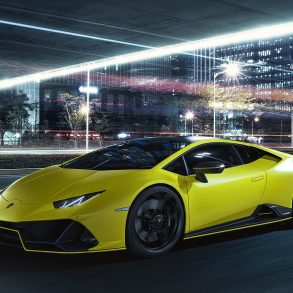
Lamborghini Huracán Fluo Capsule
2022
The Lamborghini Huracán Fluo Capsule is a special edition of the Huracán EVO supercar known for its electrifyingly bold color schemes. These vibrant matte paint options, like Verde Shock (green), Giallo Clarus (yellow), and Arancio Livrea (orange), are dramatically contrasted by matte black accents on the roof, front bumper, and side skirts.
Limited Edition Lamborghinis (Few Off)
While all Lamborghini cars are low volume, some Lamborghini cars are so exclusive and unique that they are part of what Lamborghini calls the “Few-Off” initiative. Lamborghini recently launched this new program and it is all about creating bespoke models in very limited numbers. These are the most exclusive and limited editions, equipped with the most advanced features available in the fields of design and technology.
Lamborghini Reventon
2007 - 2009
The Reventon is the most outrageous Lamborghini and some say the styling has gone to far. But that’s fine since a limited production of only 20 examples will be made. The Reventon is a strong mix of acute and obtuse angles that mimic the Murcielago lines in a whole new and more frantic way. We loved it.
Lamborghini Sesto Elemento
2011 - 2012
The Sesto Elemento was a masterpiece of extreme lightweight engineering that showed that Lamborghini could do some amazing things with the carbon-fiber technology. The 2,202 lb carbon fiber car was a revelation. V10 power unit and the permanent all-wheel drive in a body so light it had an insane power-to-weight.
Lamborghini Veneno
2013 - 2014
Only three unique units of the Lamborghini Veneno were built and sold. Its design is consistently focused on optimum aerodynamics and cornering stability, giving the Veneno the real dynamic experience of a racing prototype, yet it is fully homologated for the road. Gets 750 hp and 0 to 100 km/h in just 2.8 seconds.
Lamborghini Veneno Roadster
2013 - 2014
The 2014 Lamborghini Veneno Roadster is one of the most exclusive cars in the world, with a production run of just nine units and a price tag of $4.5 million. The engine is a development of the Aventador 6.5-litre V12 and generates a power output of 740 hp at 8,400 rpm and 509 lb⋅ft of torque at 5,500 rpm.
Lamborghini Centenario
2016 - 2017
The new Lamborghini Centenario represents a new, extremely precious piece in Lamborghini’s one-off strategy. It is a tribute to the 100th anniversary of the birth of Mr. Ferruccio Lamborghini. A total of 20 Coupe will be made (probably all sold out). One of the most exclusive (and sought-after) cars in the whole world.
Lamborghini Centenario Roadster
2016 - 2017
The open air version of the Lamborghini Centenario. A total of 20 Roadster’s will be made. The Centenario Roadster adopts Lamborghini new rear wheel steering. Designers at Centro Stile Lamborghini even developed a special exterior silver color, called “Argento Centenario” (pictured above).
Lamborghini Sián FKP 37
2020 - 2022
The special limited-edition model features a naturally aspirated 6.5-liter V12 and a mild hybrid system. All told the powertrain puts out a whopping 808 hp. The special limited-edition model features a naturally aspirated 6.5-liter V12 and a mild hybrid system. All told the powertrain puts out a whopping 808 hp.
Lamborghini Sián Roadster
2021 - 2022
The Sián has intelligent air scoops that will deploy automatically from behind the upper side air intakes. These scoops are made of super-lightweight but extremely strong composite materials, and are used to capture incoming cool air and direct it over the engine and exhaust during enthusiastic driving.
Lamborghini Countach LPI800-4
2022
The limited-series Countach LPI800-4 was launched to commemorate the 50th anniversary of the original Countach. The modern car still has the naturally aspirated V12 but this time, there's also a 48V electric motor for added boost. Lamborghini will only build 112 units of the Countach LPI800-4, each priced at over $2.6 million and yes, they have all been sold.
Lamborghini SC18 Alston
2018
The Lamborghini SC18 Alston is a truly unique beast, a one-off track-focused hypercar commissioned by a single customer and built by Lamborghini's motorsport division, Squadra Corse. It's based on the Aventador platform but features extreme aerodynamic modifications inspired by Lamborghini's racing cars.
Lamborghini Essenza SCV12
2020
The Lamborghini Essenza SCV12 is a track-only hypercar designed for the ultimate, no-holds-barred driving experience. Developed by Lamborghini's Squadra Corse motorsport division, it's limited to only 40 units and isn't bound by any racing regulations. The SCV12 features extreme, aero.
Lamborghini SC20 Alston
2018
The Lamborghini SC20 Alston is a one-off, roofless supercar that delivers a unique blend of extreme design and open-air driving thrills. Built by Lamborghini Squadra Corse, it pushes the boundaries of aerodynamic bodywork with a sculpted form inspired by racing concepts. The SC20 is a bespoke creation.
Lamborghini Invencible
2023
The Lamborghini Invencible is a stunning one-off coupe that celebrates the end of the brand's pure V12 era. Created by Lamborghini Centro Stile, it showcases the pinnacle of bespoke design, featuring sharp angles, aggressive lines, and intricate details inspired by past models like the Sesto Elemento.
Lamborghini Autentica
2023
The Auténtica features a striking open-top design, further emphasizing the raw power and symphonic wail of its mighty V12 engine. It's a true expression of pure Lamborghini performance and exclusivity – a final celebration of the iconic engine that defined the brand for decades.
Lamborghini Concept Cars
We look forward to seeing Lamborghini concept cars because the brand can be counted on to push the limits. Lamborghini concept cars are definitely futuristic and extreme vehicles, showcasing technology and designs that we dream of seeing on future production models.
Lamborghini 350 GTV
1963
Imagine showing up to a car show and a tractor manufacturer shows up with the sexiest car design you have ever seen. That's how things must have felt for consumers at the 1963 Turin Auto Show when they first saw the 350 GTV. A small group of men including Bizzarrini, Scaglione, Neri and Bonacini.
Lamborghini 350 GTS
1965
Building on the 350 GT which was launched in 1964, Lamborghini then had two roadster variants made up by Carrozzeria Touring Superleggera for show duty. Unfortunately Lamborghini never went into production of a roadster, and held out until the 1990s with the Diablo Roadster.
Lamborghini 3500 GTZ
1965
A single chassis was sent Zagato of Milan for a entirely new body designed by Ercole Spada. This special car was built on chassis number 0310 which first appeared at the 1965 London motor show. It is believed that a second, unconfirmed chassis was build on 0322 that was damaged beyond repair.
Lamborghini Flying Star II
1966
One of the very last cars designed by Carrozzeria Touring Superleggera was this unique Flying Star II showcar. It was built on a shortened 400 GT chassis and had a controversial body by Carlo Anderloni. In 1999 the car was offered for sale and it was subsequently restored.
Lamborghini 400 GT Monza
1967
This uniquely exotic front-engined Lamborghini - christened the '400GT Monza' - has been the object of speculation by Italian car collectors and Lamborghini enthusiasts. Many have doubted its survival and its whereabouts has been a much-discussed question.
Lamborghini Marzal
1967
The 1967 Marzal was a prototype by Bertone which led the way for the Espada produced only one year later. By having ample room for four people and repositioning the V12 engine up front, the design was a huge departure for Lamborghini design. It was also the second Lamborghini penned by Bertone after the successful Miura supercar.
Miura Roadster Concept
1968
There was only one factory built Roadster and it was created in 1968 by Marcello Gandini and Bertone for the Geneva Show. It featured larger air intakes, lower roll-over hoop, different taillights and a larger spoiler. This car, chassis ZN 75, was dramatically different from production Miuras and had many upgrades.
Bravo Concept
1974
Needing a replacement for the Urraco, Lamborghini had Bertone design the Bravo concept car as a possible replacement. The Bravo was first seen at the 1974 Turin Motor Show and was extensively tested before becoming a permanent feature of the Bertone collection. Powering the rear wheels was a 300 bhp V8.

Lamborghini Cheetah
1977
The Lamborghini Cheetah is an anomaly in the brand's history, a military prototype designed to compete for a US military contract in the 1970s. It was largely based on the FMC XR311 prototype, resulting in legal action from FMC. The Cheetah featured a rear-mounted Chrysler V8 engine

Lamborghini Faena
1978
The Lamborghini Faena is a one-off, four-door created in 1978 by Italian coachbuilder, Pietro Frua. Built on an extended Lamborghini Espada Series II chassis, the Faena boasted a spacious cabin with four comfortable seats, making it a true outlier among Lamborghini's usual two-seater sports cars.
Lamborghini Athon
1980
In 1980, Bertone created this futuristic concept car for the 1980 Turin Motor Show. It’s chiseled shape was typical of the mid-eighties design and it went on to inspire design in productions such as Tron, Total Recall and Robocop. Bertone built the Athon around the Silhouette chassis which featured a 2.6-liter V8.
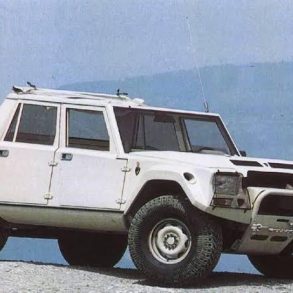
Lamborghini LM001
1981
Unveiled at the 1981 Geneva Auto Show, the LM001 aimed to capture the attention of potential military buyers. It featured rear-mounted AMC V8 engine. It proved disastrous in handling tests. The LM001's impracticality and poor off-road capability led to its abandonment as a prototype.

Lamborghini LMA002
1982
The Lamborghini LMA002 was a significant evolution over its predecessors, the Cheetah and LM001. Taking lessons learned from those failed models, Lamborghini shifted to a more traditional SUV layout, moving the engine to the front. This improved weight distribution and handling dramatically.
Lamborghini Marco Polo
1982
The Marco Polo was a styling exercise by ItalDesign that few people know about. Not a running prototype, this Giugiaro design was only a painted plastic model for aerodynamic research. The Lamborghini badge on the nose of the car was not to imply any design program undertaken with the factory but was a compliment paid by Giugiaro.
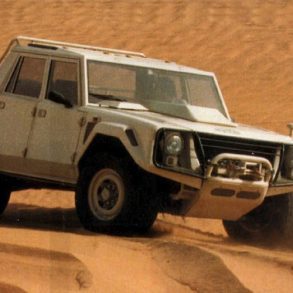
Lamborghini LM004
1986
The Lamborghini LM004 was essentially a revised production version of the LM002, but with a significant powerplant change. While the LM002 relied on the Countach-derived V12, the LM004 was outfitted with a monstrous 7.2-liter marine-use V12 engine. Only one was ever built because its performance sucked.
Lamborghini Portofino
1987
The “ultimate mid-engined touring sedan” as it was described by Chrysler is basically a four-door, stretched version of the Lamborghini Jalpa. The Portofino was engineered without B-pillars while all four doors opened upwards to grant access to a comfy interior. Only one was ever made and it was actually heavily crashed in 1991.

Lamborghini Bertone Genesis
1988
It took the form of a futuristic minivan, a bold departure from Lamborghini's usual sports car lineage. The Genesis featured striking gull-wing doors at the front and sliding doors at the rear, offering access to a spacious five-passenger cabin. Power came from the iconic Lamborghini Countach's V12 engine mated to an automatic transmission.
Lamborghini P140 Concept
1988
The Lamborghini P140 is a code name given to a series of prototype cars built by Lamborghini starting in 1987. It was intended as a replacement for the outgoing Jalpa but never went into production. The P140 was the first Lamborghini to be powered by a V10 engine. The P140 was rebodied and became the ItalDesign Cala in 1995.
Lamborghini Diablo Roadster
1992
Despite positive reception and strong customer demand, Lamborghini initially opted against production due to concerns about the structural modifications necessary. However, the Diablo Roadster concept's popularity played a major role in Lamborghini revisiting the idea, eventually leading to the production of the Diablo VT Roadster in 1995.
Lamborghini Cala Italdesign
1995
Italdesign, an independent design studio, revived the P140. Lamborghini, lacking new products, supplied Italdesign with a P140 chassis and engine. It was there were Giorgetto Giugaro exercised his skills to revive the old design. Giugaro’s final shape was fantastic and the Cala was a fully functional. Fun fact, that this author still has a magazine with Cala on the cover.
Lamborghini Zagato Raptor
1996
The Zagato Raptor was designed in conjunction with Lamborghini SpA as a limited-production model intended to bridge the gap between the Diablo and its subsequently stillborn successor, the Lamborghini Canto. Although the model never went into production, the stunning one-off Raptor concept was much lighter than a Diablo.
Lamborghini Coatl
1997
The Lamborghini Alar was a concept for a mid-engined sports car to be produced by Lamborghini Latino America. A unit was rumored to cost $750,000 each. The Alar was heavily based on the Diablo especially in the areas of chassis and engine. Other components are made locally by the company.
Lamborghini P147 Canto
1998
In the mid 90's before the German acquisition of Lamborghini in 1998 by Audi, there was uncertainty surrounding the proposed successor to the Diablo. There are two Lamborghini P147 concepts put forward, the Zagato designed Canto and the Gandini designed Acosta. Both cars share the P147 name.
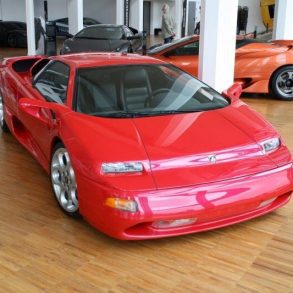
Lamborghini P147 Acosta
1998
Created by renowned designer Marcello Gandini, it proposed a more sculpted and organic design language for Lamborghini compared to the Diablo's angular styling. The Acosta featured large, flowing intakes, a rounded rear, and hidden rear lights under the trailing edge of the bodywork.
Lamborghini Murciélago Barchetta
2002
A prelude to the roadster Murciélago. What sets the Barchetta apart from its coupe counterpart is a number of aggressive styling elements including wheels and a new engine cover. Lamborghini hinted this new styling may reflect the future of their design language still headed by Luc Donkerwolke. It certainly did.
Lamborghini Concept S
2005
The Concept S features two separate "saute-vent" windshields instead of a traditional one, effectively splitting the cockpit into two distinct driver and passenger compartments. This design, along with its striking speedster styling, exposed engine, and central rearview mirror, creates a visually arresting appearance.
Miura Concept
2006
Lamborghini Miura Concept, a modern interpretation of the Lamborghini Miura. It was built to commemorate the 40 year anniversary of the original Miura. The new car retains the extraordinary purity of line: the designer’s intervention has been defined by refining the contours and eliminating any superfluous detail.
Lamborghini Estoque
2008
It was the first-ever four-door concept car from Lamborghini, introducing the possibility of blending their signature supercar performance with real-world practicality. The Estoque featured a long, sleek design with a stretched bonnet and a spacious interior for four occupants. Power was to come from a Gallardo-derived V10.
Lamborghini 5-95 Zagato
2012
The Zagato body expresses the typical key values of an “instant classic”: fascinating, rare and a pure expression of the brands it stands for. The 5-95 was created with the only limitation of active and passive safety. Two “strong” themes define the design in its whole: the volume of the front fender that bites the bonnet and the rear end.
Lamborghini Urus
2012
The 2012 Lamborghini Urus concept was a watershed moment for the brand, boldly unveiling its vision for a high-performance SUV. The Urus concept's sharp lines, aggressive stance, and unmistakable Lamborghini design cues challenged the traditional image of an SUV. It boasted a potent V10 engine.
Lamborghini Egoista
2013
The Lamborghini Egoista is a true automotive oddity – a single-seater concept car unveiled in 2013 to celebrate the brand's 50th anniversary. Inspired by fighter jet design, its features include a canopy cockpit, an extreme aerodynamic form, and a stealth appearance. The Egoista is powered by a potent V10 engine taken from the Gallardo.
Lamborghini Asterion
2014
Lamborghini unveiled its first plug-in hybrid (PHEV) technology demonstrator, the Lamborghini Asterion LPI 910-4 at the 2014 Paris Mondial del’Automobile. The Asterion LPI 910-4 is a true Lamborghini: emotional, with a stunning design, powerful, yet conceived more for comfortable luxury daily cruising than track performance.
Terzo Millennio
2017
The Lamborghini Terzo Millennio, unveiled in 2017, embodies the brand's vision for an electric future. Developed with MIT, the concept has cutting-edge technologies like supercapacitors integrated into its bodywork, self-healing and electric motors within the wheels.
Lamborghini Huracán Sterrato
2019
Based on the Huracán EVO, the Huracán Sterrato Concept is the off-road vehicle. The Sterrato Concept still has most of the Huracán EVO’s bits, including the 5.2-liter V10 that makes 640 hp. The drive systems have been recalibrated to handle the rigors of off-road terrain.
V12 Vision Gran Turismo
2019
Lamborghini unveiled the V12 Vision Gran Turismo concept car at the FIA-Certified Gran Turismo Championship in Monte Carlo. It is powered by a hybrid powertrain that gets a 6.5-liter V12 that’s paired with a mild 48-volt hybrid system. It makes 819 hp and 602 lb-ft of torque.
Lamborghini Race Cars
Lamborghini was not a manufacturer known for its racing heritage which is why there are no Lamborghini race cars in the early days of the brand. More recently however we see that the company has started to invest in racing models for their customers. Most recently Lamborghini announced the Huracan Super Trofeo race car and its a cracker. Here is a look at all the Lamborghini race cars created throughout the company’s history.




